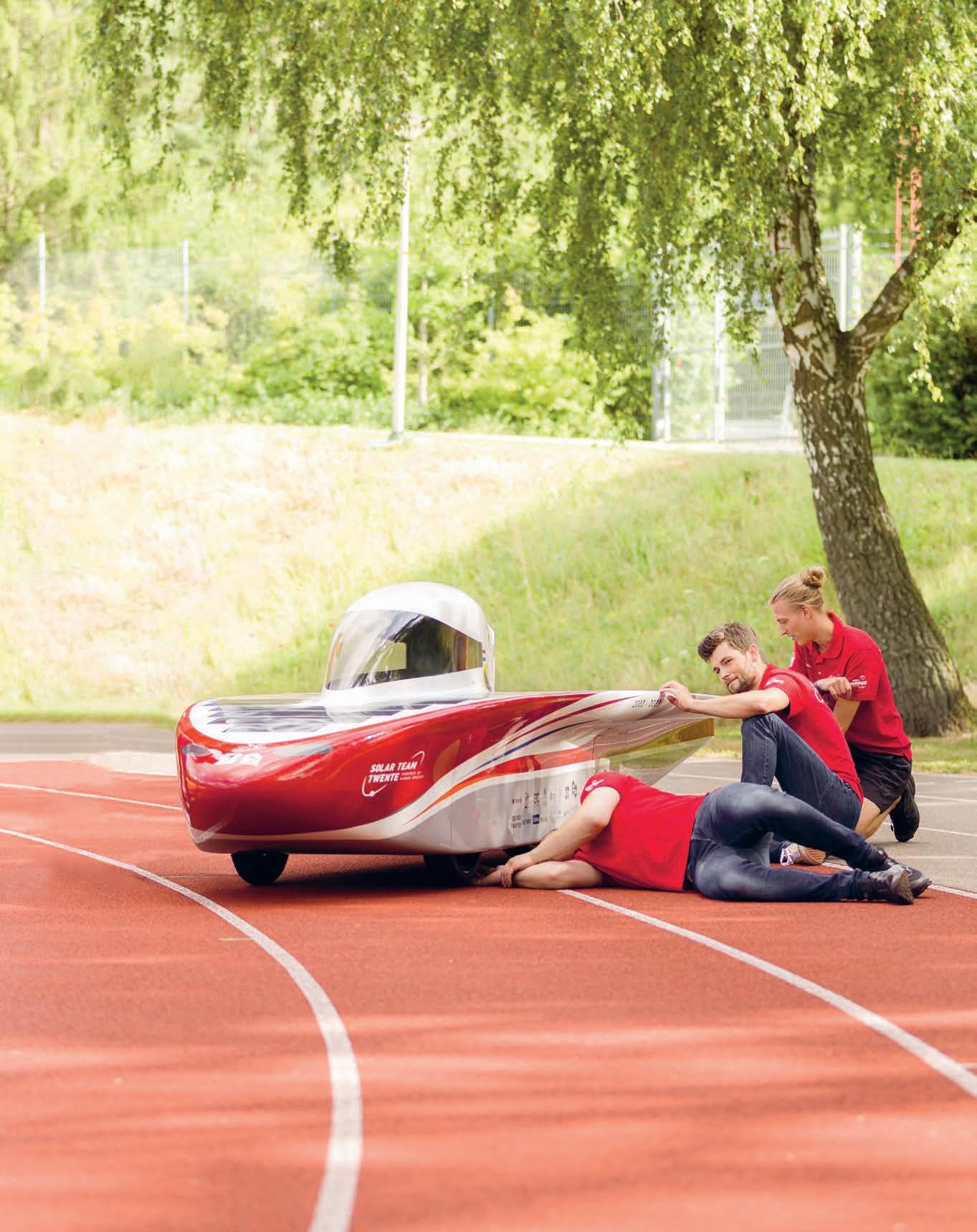
SEPTEMBER 2023 ISSUE 10 04 OPENING STORY: ITC'S MOVE TO CAMPUS 12 ATLAS DEAN HELEEN MIEDEMA REFLECTS ON HER CAREER EVERYTHING COMES TOGETHER IN UT'S WATERLAB SOLAR TEAM TWENTE GUTS, THAT'S WHAT IT'S ALL ABOUT 32 44 ALUMNUS TONY AGOTHA ABOUT STUDYING, BASEBALL AND POLITICS 36
COLOPHON
This Campus Magazine is a co-production between U-Today, Marketing & Communications and the Alumni Office at the University of Twente.
Campus Magazine Team

Ratna Toering (publisher), Maaike Platvoet (editor-in-chief), Ditta op den Dries-van Baaren (editor), Sandra Pool, Rense Kuipers, Jelle Posthuma, Stan Waning, Laurens van der Velde, Kees Wesselink-Schram, Maurice Essers, Joe Laufer.
Other writers who contributed to this issue
Michaela Nesvarova, Wiendelt Steenbergen, Hiska Bakker.
Photos by Rikkert Harink, Klaas-Jelmer Sixma (cover), Frans Nikkels, Eric Brinkhorst, UT archive.
To change your address, opt-out from receiving the magazine or only receive an online version
See www.utwente.nl/ magazinepreferences (for UT employees)
See www.utwente.nl/ my-alumni-preferences (for UT alumni)
Or email to: alumni@utwente.nl
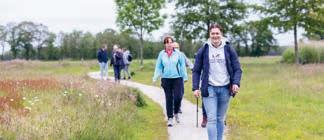
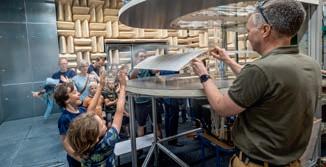
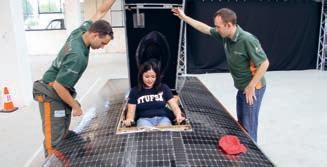
Contact & tips for editorial team utoday@utwente.nl
Design and realization
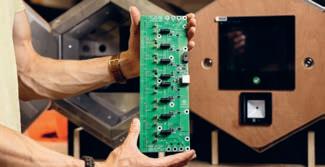
Jeremiah Wetzel
Printing office
Zalsman, www.zalsman.nl
Copyright notice
Copyright © 2023 All rights reserved. No part of this magazine may be reproduced or distributed without the written consent of the Campus Magazine team.
23 FIVE QUESTIONS FOR SYLVIA BUTZKE 26 RESEARCH: LLAMA BLOOD TO RELIEVE OSTEOARTHRITIS PAIN



CONTENT 04 OPENING STORY ITC'S MOVE TO CAMPUS 30 BACK IN THE YEAR 2003: The birth of Solar Team Twente
PICTURE
20
WALKING
PEOPLE WITH DIABETES 10 HIGHLIGHTS What has happened at the UT? 18 INTO THE UNKNOWN RECYCLEWELL
24 IN THE
BLOWN AWAY
A
GROUP FOR
09
12 HELEEN MIEDEMA: THE OUTSIDE WORLD ONLY SAW THAT TERRIER
COLUMN BY WIENDELT STEENBERGEN
CAMPUS
16 PHD STORIES FEMKE WITMANS
ALUMNI INTERVIEW WITH TONY AGOTHA IN BRUSSELS
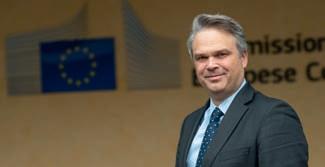

DOWN UNDER
This tenth edition of Campus Magazine appears on the eve of a special race; that of the World Solar Challenge in Australia. This issue therefore pays plenty of attention to the students from Twente who are about to travel Down Under. And this year is a special race; because Solar Team Twente is celebrating its twentieth anniversary.

Joost Kuckartz, the student who in 2003 conceived the idea that participating in such a race might be really cool, tells his story in detail (page 16). At the time, Kuckartz posted homemade flyers all over campus to recruit team members. 'Fifteen people responded, all of whom also joined the team. We didn't do interviews. We had people from all faculties and studies, from Electrical Engineering to Public Administration. That made our team unique.’
When they finally competed in 2005 with solar car SolUTra, I maintained close contact with them as a reporter for UT Nieuws (U-Today’s predecessor). The SolUTra was plagued by flat tires, but also by rain (in Australia no less), which meant that the solar cells did not perform optimally. Still, they were incredibly proud of their ninth place. The joy of the pioneers was palpable. And they enjoyed the adventure, most of all.
It is what I wish the current team: to enjoy. In twenty years, Solar Team Twente has become more professional. Last June, the RED X was unveiled during a slick show and in the presence of some seven hundred interested attendants. The new car features a new ‘battery management system’, a self-developed powertrain, and the solar cells ingeniously overlap.
I hope for a win for them. Because despite professionalization, innovations and sponsorships, they have not yet succeeded in that. Yet in the end – I think – it's about other things than that podium finish. When you are racing for days through a desert, constantly living in each other’s pocket, experiencing stress and tension, it comes down to perseverance, drive, trailblazing and friendship. Go for it! •
Maaike Platvoet Editor-in-chief of Campus Magazine
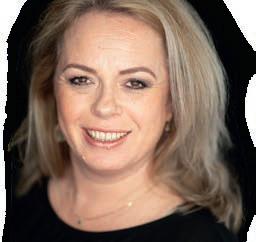
39 COLUMN BY HISKA BAKKER 32 GUTS, THAT'S WHAT IT'S ALL ABOUT AT SOLAR TEAM TWENTE 40 UT’ERS ON THE MOVE 41 ALUMNI NEWS ALUMNI TALKS 2023 42 TWENTE UNIVERSITY FUND TEAM UP FOR TALENT 44 RESEARCH EVERYTHING COMES TOGETHER IN UT'S WATERLAB
FOREWORD 36
04 • 2023
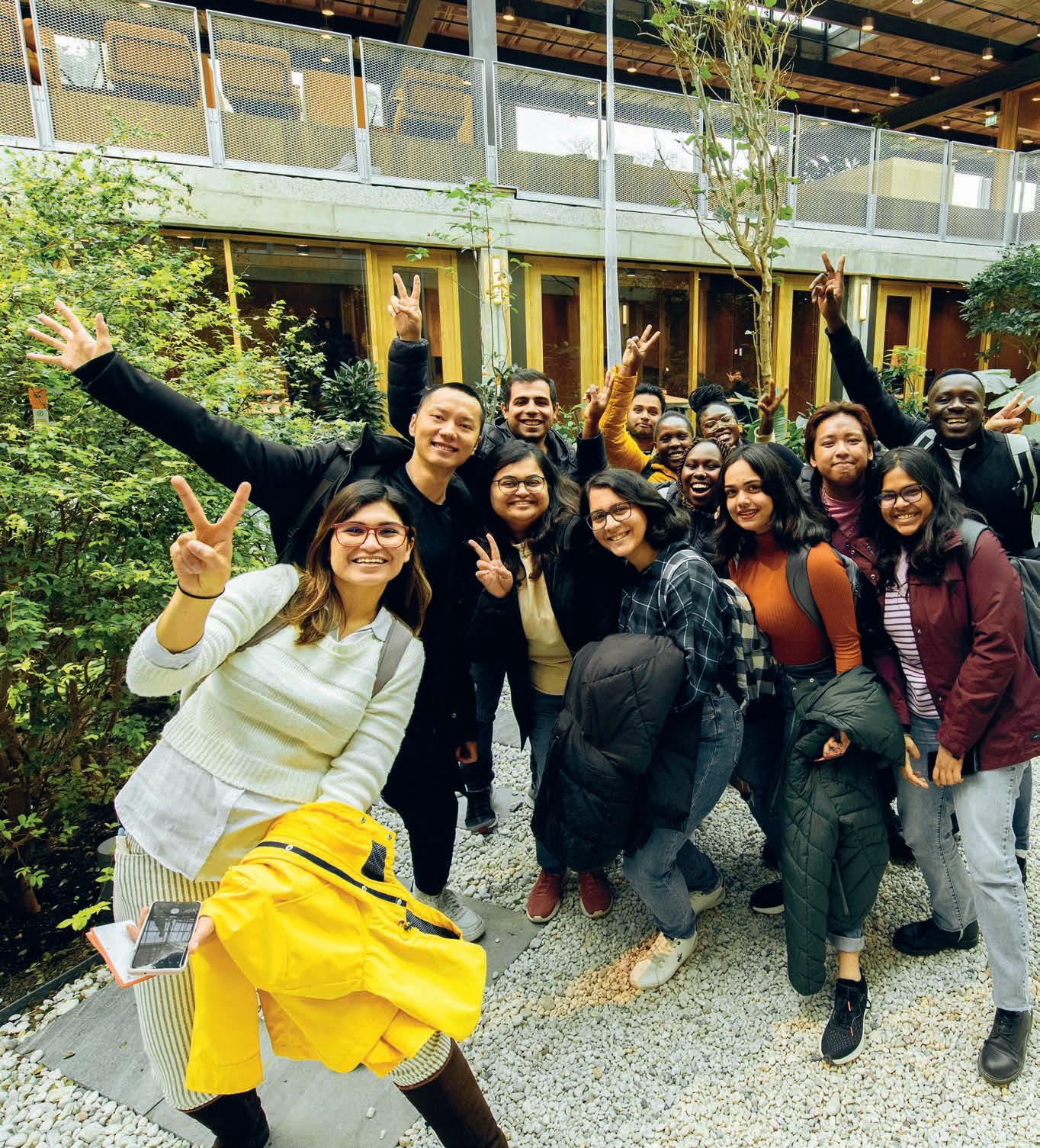
OPENING STORY
Photos: Frans Nikkels, Klaas-Jelmer Sixma & UT archive
Text: Rense Kuipers & Stan Waning
CAMPUS
FINALLY A PRIME POSITION ON CAMPUS FOR ITC
FOR YEARS, A THREE-KILOMETRE STRIP OF ASPHALT SEPARATED THE ITC FACULTY FROM ‘THE REST’ OF THE UNIVERSITY OF TWENTE. AFTER A DRAWN-OUT AND SOMETIMES DRAINING RUN-UP, ITC HAS FINALLY FOUND ITS WAY TO CAMPUS. BELOW WE PRESENT A PROFILE OF A SPECIAL FACULTY, NOW THAT THE AMALGAMATION IS COMPLETE.


It is a rite of passage for many an ITC graduate: the traditional graduation photo at ‘de Kronkel’. A sculpture by Charles Hammes, which has served as ITC’s logo for many years: a wide continuous strip represents the earth, around which is flying a figure. Is it a bird? A plane? What we do know is that it symbolises aerial mapping.
ITC was officially founded on 11 July 1950, but the date of 17 December may be more important. That is the birthday of Willem Schermerhorn, who since 1926 had been professor of land surveying, levelling and geodesy at the then Technische Hogeschool Delft. Shortly after the end of the Second World War, he founded the ITC during a conference he organised. Its original name was the ‘International Training Centre for Aerial Survey’: a training institute offering courses on cartography and aerial photography to people from developing countries. Over the years, the full name evolved to ‘International
Institute for Aerial Survey and Earth Sciences’ and eventually to the ‘Faculty of Geo-Information Science and Earth Observation’ as it is known today. The fact that this name is such a tongue twister is no doubt the reason why the acronym ITC - International Training Centre - has stuck around for over seventy years.
On 11 July 1950, the institute is established. It did not have its own building yet, so it was initially housed in the premises of the geodesy department of the Technische Hogeschool in Delft. Schermerhorn became the institute’s first rector, in the same building where he lived, on the Kanaalweg in Delft. Six years later, Prince Bernhard opened the ITC’s very own building on that same street, housing not only residences for teachers but also students. Founder Schermerhorn also moved into the new building himself and took up residence in the penthouse.
TO CAMPUS
MOVE
5 04 • 2023
So how did the institute come to be located in Enschede? This is rooted in a political choice; due to a dispersal policy implemented in the late 1960s, the eastern part of the Netherlands was to be strengthened socio-economically. This led to the decision to move part of the ITC to Enschede. And so, in 1971, part of the ITC moved into the old Twentec building on Boulevard 1945, right in the city centre. This time, the building was opened by Prince Claus. It was only in 2000 that the last ITC members made the switch from Delft to Enschede.
At that point, ITC had already been located in the building on Hengelosestraat for years. This building was opened in 1996 by Maha Chakri Sirindhorn, the princess of Thailand. Yet prior to the institute’s third move, there was a tentative flirtation with the UT. Although it can also be interpreted as a plan for an arranged marriage. If it had been up to the Ministry of Education, Culture and Science in the late 1980s, ITC
would already have moved to UT’s campus at that time. However, ITCwhich had grown into a training and research institute of international repute – preferred to stay close to Enschede’s city centre.
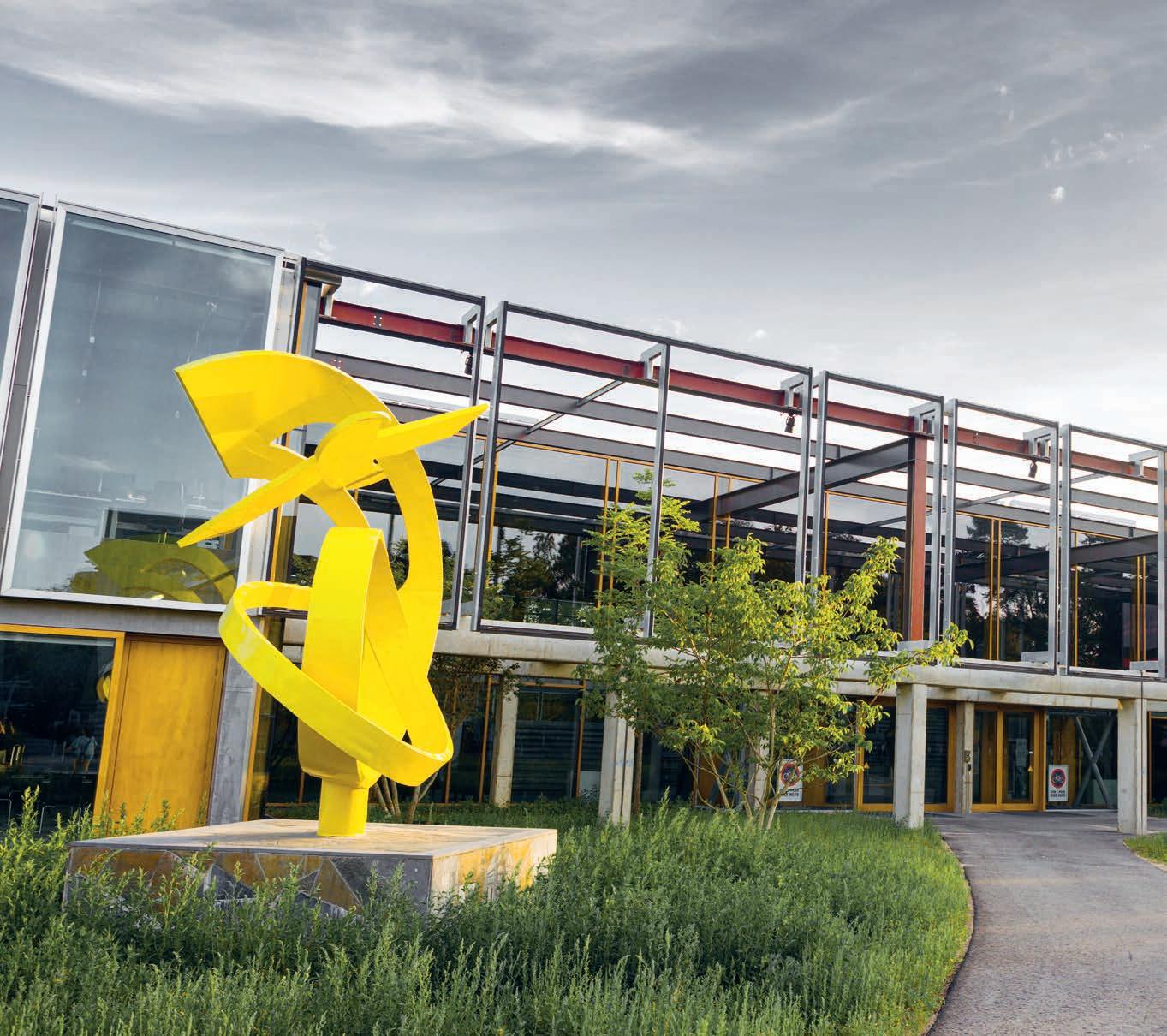
HENGELOSESTRAAT OF DRIENERLOLAAN?
The political pressure subsided for a while, but resurfaced around the turn of the millennium. Things were set in motion by the Higher Education and Research Plan of then education minister Loek Hermans. As one of five institutions for international education, ITC had to bind itself (administratively) to a university. After some initial indecision regarding the choice between the UT and Utrecht University, the institute opted for its next-door neighbour as the coordinating organisation. Purely administrative or a first step towards closer cooperation? Martien Molenaar, rector of ITC at the time, had this to say: ‘Our autonomy is paramount. We will continue to be the ITC we are today. The secretariat is an administrative link, which is essentially just a formality.’
No matter how firmly put, Molenaar did hint that closer cooperation was an obvious choice. As it turned out, the secretariat was a first step towards the integration of ITC into the UT. On 1 January 2010,
OPENING STORY 6 CAMPUS
the integration was complete; ITC became the sixth UT faculty, a so-called faculty sui generis, unique in its kind but with the same authorisations as the other five faculties. Time for a new move? In 2010, UT Nieuws (U-Today’s predecessor) interviewed ITC’s brand-new dean Tom Veldkamp and presented him with the following dilemma: Hengelosestraat or Drienerlolaan? For now, ITC is at the right place, replied Veldkamp, now rector magnificus of the UT. ‘Eventually, ITC will probably be housed on campus, but that will take at least ten years. First, we will have to get the accommodation of our international students in order, at any rate.’
SPECTACULAR CHANGE
Looking back with the knowledge of today, Veldkamp’s answer was quite an accurate estimation of the start of the fourth relocation process, which began to take shape in 2013. Both the Horst building and Technohal were being considered for future accommodation of the ITC faculty in that year. When the move would take place was not yet known at that time. Campus & Facility Management conducted a ‘feasibility assessment’.
A year later, the plans for the Horst or Technohal were scrapped. The Spiegel was now to be the ITC faculty’s new home. The Executive Board considered the building to be the ideal location for the ITC because it would give the campus a more international character, located prominently near the main entrance. In addition, it is clearly its own place, which is what the ITC was looking for, according to the Executive Board. But by 2016, there were already doubts about the ITC faculty's
move to Spiegel. Over the next few months, the Board reassessed the accommodation plans, reported UT Nieuws. Apparently, ITC would prefer to move into one of the buildings surrounding O&O square.
The faculty's wish was granted that same year. ITC would move to Citadel and the health cluster would move to Technohal, according to this scenario. This was supposed to bring about a ‘spectacular change’ at the O&O square. A ‘sustainable and distinctive’ building with no less than thirteen floors was going to be erected for ITC right where Citadel is located, including a rooftop garden, managing director Erna Leurink hinted at the time.
But meanwhile, the market was picking up and construction prices were rising. In 2018, it became clear that the new construction plans for the ITC faculty would be temporarily shelved. Not much later, it turned out that the Citadel plans were completely off the table and ITC had to look for another location. There were three possible alternatives to consider at that point. 1: New construction near the O&O square. 2: The old Langezijds building. 3: Cancelling the move altogether.
They settled on option 2. In 2019, the proverbial die was cast. The ITC faculty would go to Langezijds, a 220-metre-long building that had been home to UT’s chemical engineers for years. And so, in three years’ time, the building transformed from a vacant space, to a
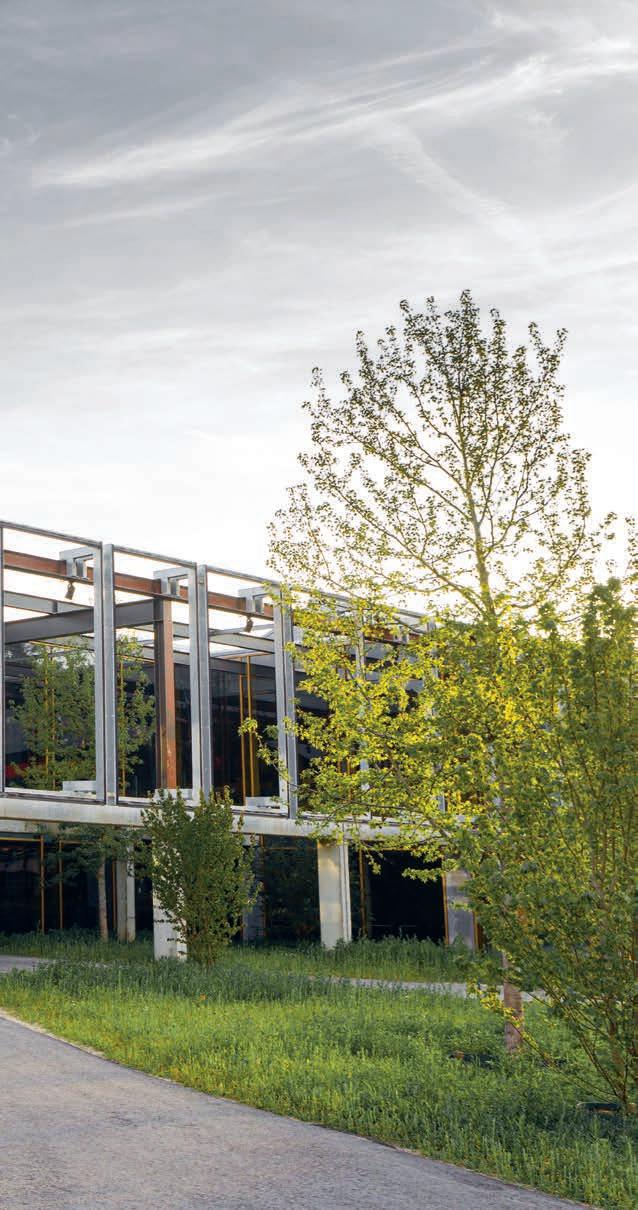
ITC faculty alumni
- The ITC faculty boasts more than 25,000 alumni. The term ‘alumni’ is used somewhat broader here; anyone who has ever completed a course at ITC is counted.
- About three-quarters of the alumni group are from Africa or Asia and more than a quarter of ITC alumni are women.
- ITC alumni are spread across 177 countries worldwide.
A FEW NOTABLE ITC ALUMNI:
- Siti Nurbaya Bakar (’88), Minister of Environment & Forestry in Indonesia since 2017.
- Wilber Otichilo (’82), governor of Vihiga County in Western Kenya since 2011.
- Vishnu Nandan (’12), was part of MOSAiC, the largest ever polar expedition.
- Daryll Mathew (’00), Minister of Education, Sports & Creative Industries in Antigua and Barbuda since 2020.
- Amon Murwira (’03), Minister of Higher Education, Science & Technology Development in Zimbabwe since 2019.
7 04 • 2023
construction site, to eventually a vibrant building with a ‘social heart’ and three courtyard gardens.
CAPSTONE
As the first new residents moved in in spring 2023, an almost decade-long game of musical chairs finally came to an end. But the job is done: ITC has been successfully moved to campus. In an earlier interview with U-Today, Annemarie Arets, who led the ITC working group as the project’s initiator, summarised it well: ‘The move is the ultimate capstone of ITC’s integration at the UT.’
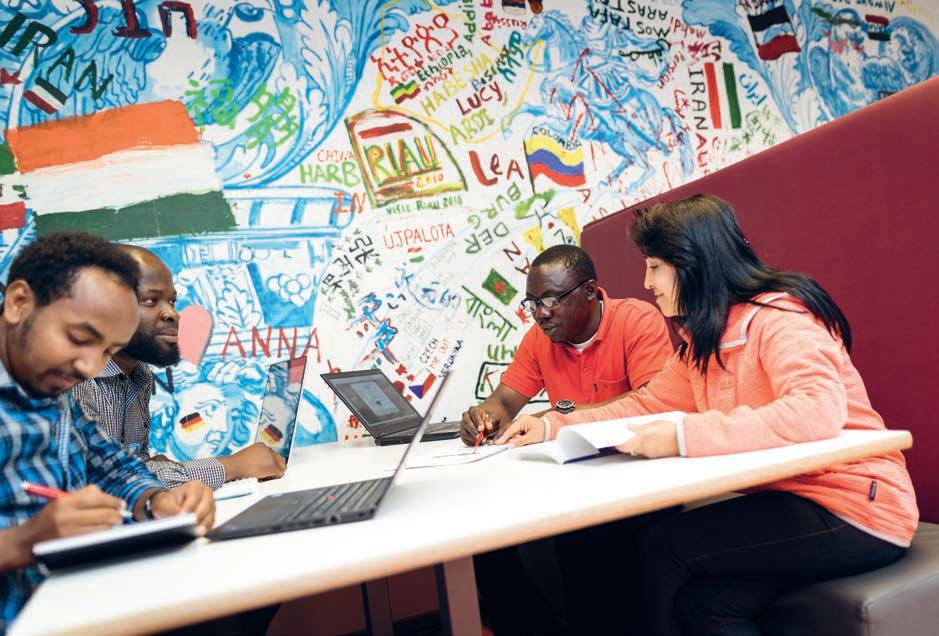
The training centre that became an institute. The institute that became a faculty. ITC moved a total of four times – sometimes reluctantly. Despite the ITC’s seemingly turbulent past, many of its staff will endorse the sense of community that has never faded away. The ‘ITC Family’ has long been a common adage. ‘But especially now that the move is behind us, I expect – and hope – that we will increasingly start using the phrase ‘UT Family’ instead,’ says current ITC dean Freek van der Meer. ‘Especially since 2010 – when we became much more academic – we've been gradually evolving from an institute into a faculty; this relocation is the final step in that process. The only thing that still sets our faculty apart from the others is that we’re a faculty with a mission and we’re partly funded by a different ministry.’
Despite this differing funding structure, the faculty sui generis has grown closer to ‘the rest’ of the university over the past decade. In terms of research, the BMS and ITC faculties were already trying to find each other in 2015 with ‘GeoHealth’, a theme that seems to be gradually gaining momentum now and also involves collaboration with
WILLEM SCHERMERHORN
Professor Willem (Wim) Schermerhorn became the Netherlands’ first prime minister after the Second World War in 1945, as the leader of a so-called emergency cabinet. This was because elections to the Lower House had yet to take place after the German occupation. Schermerhorn served as rector of ITC from 1950 to 1962. He passed away in 1977 at the age of 82.
the TechMed Centre. With regard to organisation, over the past few years, ITC was put in charge of University College Twente, as well as Pre-U, UT’s pre-university programme, among others. Education-wise, there was also quite a shift; whereas ITC’s core task as an institute and later as a faculty had been to provide knowledge to people from developing countries (often young professionals), the arrival of Spatial Engineering in 2018 saw the addition of a more ‘traditional’ master’s programme to its academic offering. ‘I hope the move will facilitate the desire to pursue even more collaboration with other faculties. Although this is already happening, I think that as a university we can further improve on that,’ concludes Van der Meer. ‘After years of patience, we now have a prime position on campus. That’s truly something special.’ •

OPENING STORY 8
CAMPUS
BECOMING LIKE LITTLE CHILDREN
Just as I was about to leave the restroom, the door swung open and nearly hit me in the face. The fact that we managed to avoid a full-on collision was not thanks to the person entering: my reflexes kicked in and I jumped to the side. Deeply engrossed in his phone, a colleague stepped into the room; he didn’t even see me and kept staring at his phone. ‘Idiot,’ I mumbled under my breath. I would have preferred in that moment to just say it loudly to his face, but a complex combination of bewilderment, shock, a thin layer of decorum, restraint, and aversion to conflict kept me from raising my voice. Besides, scolding someone out loud leads to fuss (headline: ‘Professor yells at young scientist’).
Perhaps it would have served him better if I’d called him out so audibly that he had looked up from his phone. As it was, I remained a nobody to him. If I’d clearly expressed myself verbally, I would have been a somebody to him, and he would have been something more to me than just a dangerous passer-by and the object of my powerless anger. At least there would have been a first step of communication, namely eye contact. But what would have been the next step? Should I have lectured him on how it is better to look in front of you and around you as you walk through the building? Yes, I suppose so. Sometimes you just have to keep explaining things that are seemingly self-explanatory, because we humans tend to stop thinking when using certain devices. The effect that certain technology has on us is that we become like little children, but not in the sense that Jesus intended. Such technology infantilises us.
I’d already come up with the term ‘infantilisation’ when I decided to do a quick search to see if it was really an original idea. Alas, philosopher Birgit Beck had already written an article entitled Infantilisation through Technology. She writes about “persuasive technologies” that are supposed to nudge us in the right direction, often treating us like children in doing so. However, the infantilisation
I am talking about is the disappearance of a basic notion of propriety and normal adult behaviour. As a child riding my bike, I was sometimes so mesmerised by something in the distance that I would crash into a parked car or lamppost. Those were hard lessons, and it hasn’t happened to me in a long time. A toddler who is done playing often drops toys on the spot, not considering the possibility of another person tripping over them. So we have to explain to adults once again what they probably learned as children: that you have to look around to avoid collisions. That you can’t just leave your rental scooter in the middle of the pavement after using it because you happened to come to a stop there.
As a parent, you might get angry at first if your child crashes into a lamppost but afterwards you comfort your child, say some loving nurturing words and give them a hug. Not all of this is applicable in the workplace (headline: ‘Professor gives hug to young scientist’). But empathic anger, maybe that’s what we need in order to help our fellow technology-infantilised human beings. And patience, lots of it. •
Wiendelt Steenbergen Professor of Biomedical Photonic Imaging
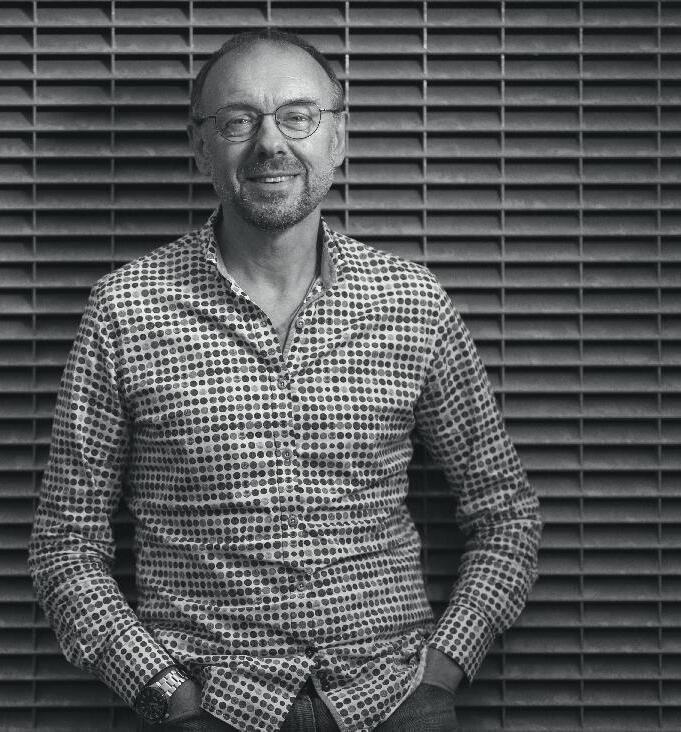
9
COLUMN
Photo: Rikkert Harink Text: Wiendelt Steenbergen
04 • 2023
HEIDI TOIVONEN UT TEACHER OF THE YEAR
Assistant professor Heidi Toivonen is the winner of the Educational award and may call herself UT teacher of the year 2023. The jury and the audience present chose her over the other three finalists, Erik Faber, Ruud Jacobs and Ipek Seyran Topan.

At the Waaier, the four teachers gave a mini-lecture to the audience. The presentation by Toivonen, who teaches psychology students, was about how different narratives influence our actions regarding the climate crisis. With her lecture, she managed to convince the jury and the audience. Toivonen received a certificate and a prize of 2,500 euros, which will formally be awarded during the Opening of the Academic Year. •
CAMPUS MAGAZINE READER SURVEY
Alumni, staff and students rated Campus Magazine quite highly. On average, the magazine scores almost a 7. This is according to the reader survey carried out by Newcom Research & Consultancy. A total of 602 people completed the survey. The survey shows that the magazine reaches two out of three employees and alumni. The strength of Campus lies in the comprehensibility and variety of articles, the challenge is in relevance to the reader. A large majority indicated they prefer to receive the magazine physically - i.e. in print - with a preference for three times a year. •
'BASISBEURS' FOR STUDENTS
The 'basisbeurs' will return next academic year. The Senate agreed to this before the summer. The student grant will replace the loan system, which has been in place since 2015. In September, the 'basisbeurs' will be €110.30 for students living with their parents. For those living on their own, the scholarship is €274.90. For students living out of home, 164.30 euros will be added next academic year due to high inflation. •
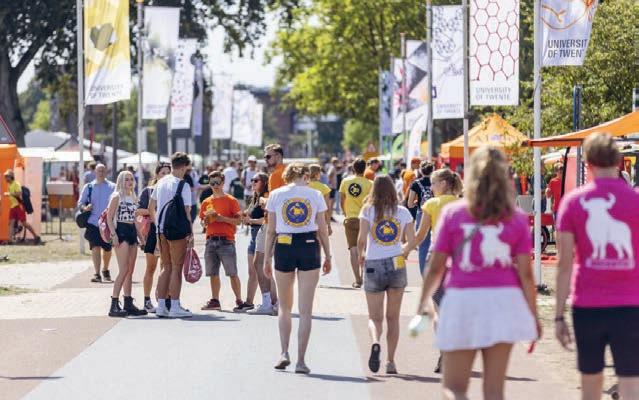
10 HIGHLIGHTS
CAMPUS
BRAM NAUTA WINS STEVIN PRIZE
UT professor of Integrated Circuit Design Bram Nauta is this year's recipient of the prestigious Stevin Prize. This makes Nauta the first UT professor to win this prize, one of the highest scientific awards in the Netherlands.

Nauta will receive the 1.5 million euro prize from The Dutch Research Council (NWO). At the beginning of June, the science funder announced the laureates of the Spinoza and Stevin Prizes. A total of four researchers - two for each - received a prize ‘for their outstanding, pioneering and inspiring work’. The Spinoza Prize focuses on fundamental issues, while the Stevin Prize is about societal impact.
UT professor Nauta is an expert in in designing circuits on chips. With his invention, the so-called 'Nauta circuit', he stood at the basis of the (energyefficient) development of smartphones, the 5G network, Wi-Fi and Bluetooth. The jury praised his recent work on energy-efficient chips. The prize will be awarded on Wednesday 4 October. At that time, the winners will announce what they plan to use the funds for. •
INTERNATIONALISATION
The Dutch parliament debated the internationalisation of higher education just before the summer holidays. The influx of international students and the language of instruction are pressing issues. For the UT, the stakes are high: a major part of its students and staff are international, and the language of instruction is English.
It became clear from the debate that education minister Robbert Dijkgraaf wants more room for Dutch in higher education. Although it is not yet clear exactly what actions the minister will take, the UT expressed its concerns after the debate. 'As the Executive Board, we value internationalisation greatly. Without the contributions of international students and colleagues, we would not be the university we are today,' said President Vinod Subramaniam at a recent University Council meeting. •
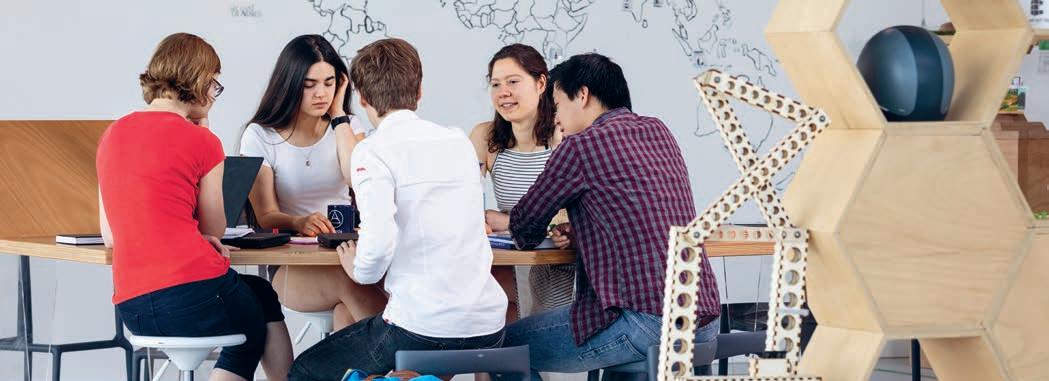
11 04 • 2023
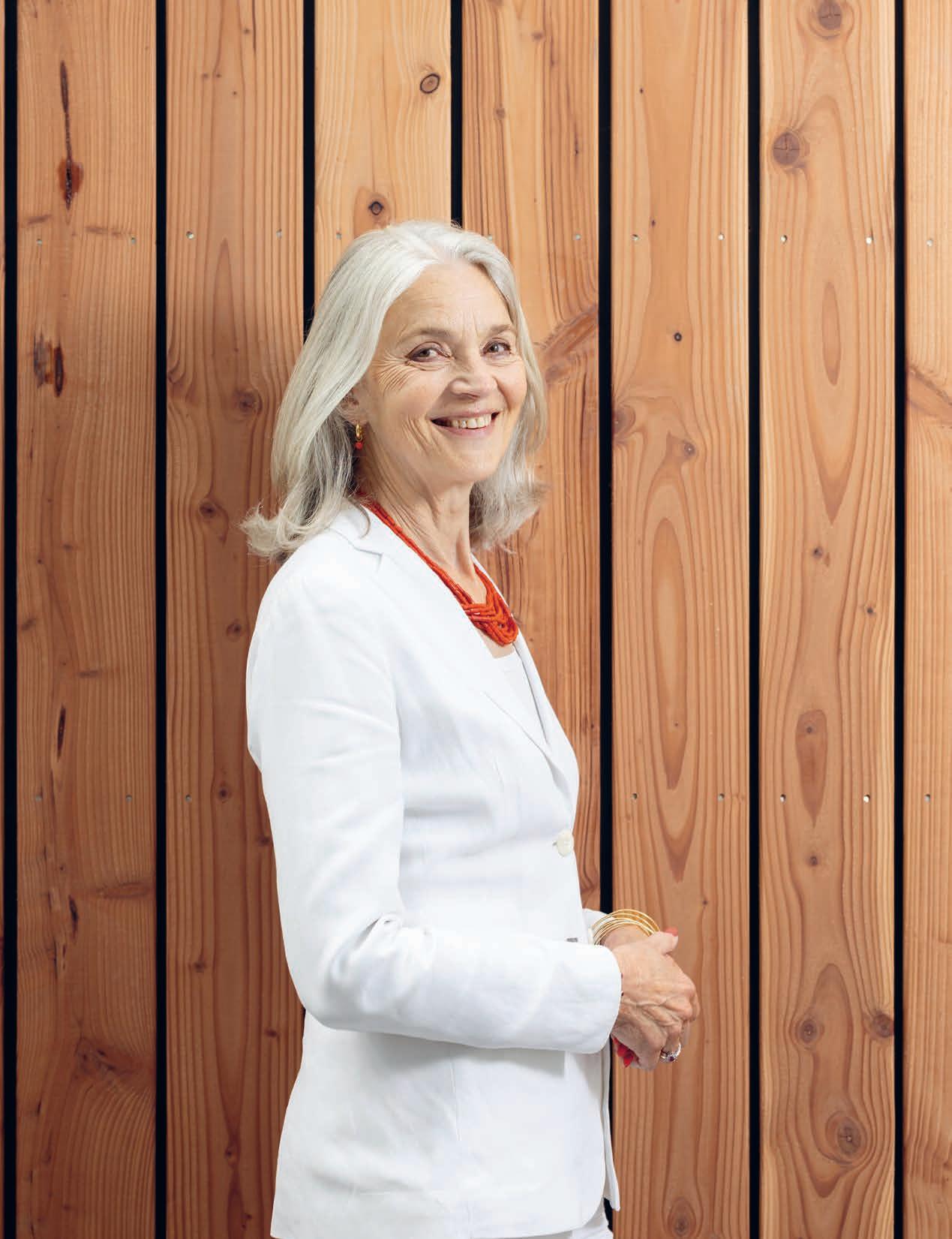
INTERVIEW
Photos: Rikkert Harink
12 CAMPUS
Text: Rense Kuipers
‘THE OUTSIDE WORLD ONLY SAW THAT TERRIER’
HER OFFICIAL FAREWELL FROM THE HEALTH CLUSTER IS ALREADY PLANNED AND HER RETIREMENT WAS JUST ABOUT TO START, WERE IT NOT FOR THE 'GIFT' THE UT PRESENTED TO HER. ATLAS DEAN AND ‘FOUNDING MOTHER’ OF TECHNICAL MEDICINE HELEEN MIEDEMA (67) REFLECTS ON HER CAREER, THE UNIVERSITY AND HERSELF, BY TALKING ABOUT HER PIVOTAL YEARS AT THE UT.
2022: ONE LAST INTERIM JOB
In the spring of 2022, a critical evaluation report is issued on ATLAS, UT’s prestigious University College. Heleen Miedema is appointed dean to get the excellence programme back on track. One year later and with a ‘top programme’ designation in the latest Keuzegids, Miedema calls her interim period a ‘gift’. ‘This place is like Madurodam; this programme is a small-scale version of the UT itself, the personification of the educational philosophy of this university.’
What does she think is the essence of that philosophy? ‘We consider the student an equal partner in our education and research. Here in Twente, you shouldn’t find the obedient, docile students. What we want to see is an enterprising, independent and strong-willed attitude. And the willingness to ask questions because that’s how research begins. We have to set these students free. It’s like teaching someone how to ride a bike; you shouldn’t hold on to them, but let them go. The same is true for ATLAS. These students are our new Einsteins and prime ministers. These are the people we will still get to address by their first name in the future, because they studied here.’
At ATLAS, she also has the ‘crème de la crème’ of staff around her. And very much in line with the educational vision, they are ‘all strong-willed’, Miedema says. ‘Was something wrong with ATLAS at the time of the evaluation report? No, absolutely not. But strong-willed and driven people do need guidance, otherwise they jump ship. Moreover, people want to feel part of something, and that sense of community had
somewhat faded. We all want a nest. Feeling recognised, acknowledged and accepted gives a sense of happiness. That is also why I have immeasurable respect for the individual nature of the positions around me. If there is one thing I can’t stand, it’s when people tell me what to do. That’s why I don’t give anyone orders on what to do, I see that as a form of disrespect. But I do want to have a common goal that we work toward.’
2000: A MEDICAL FACULTY IN TWENTE?
A trained educational designer, Heleen Miedema starts her career at the UT in 1998. As a policy officer, she is instrumental in founding the Health Sciences and Biomedical Technology programmes. In the year 2000, she tries to push for a medical degree programme – and with it the arrival of a ninth, medical faculty and teaching hospital in Twente. The plans are met with resistance from the other medical faculties in the Netherlands and then-minister Els Borst. ‘If you know your history, you know your future. The last time the UT wanted to establish a medical faculty, in the 1970s, every party involved in Twente seemed to have their own agenda, which did not help. The reason why Limburg did succeed in setting up a medical faculty was because they had the Queen’s Commissioner Sjeng Kremers as a sort of outpost in The Hague. They had one profile, one message, one face, one mouth and one voice. I started doing the same thing.’
2003: THE BIRTH OF TECHNICAL MEDICINE
‘I love working at ATLAS but my heart lies with Technical Medicine. It's my child,’ says Miedema passionately. That child is born twenty
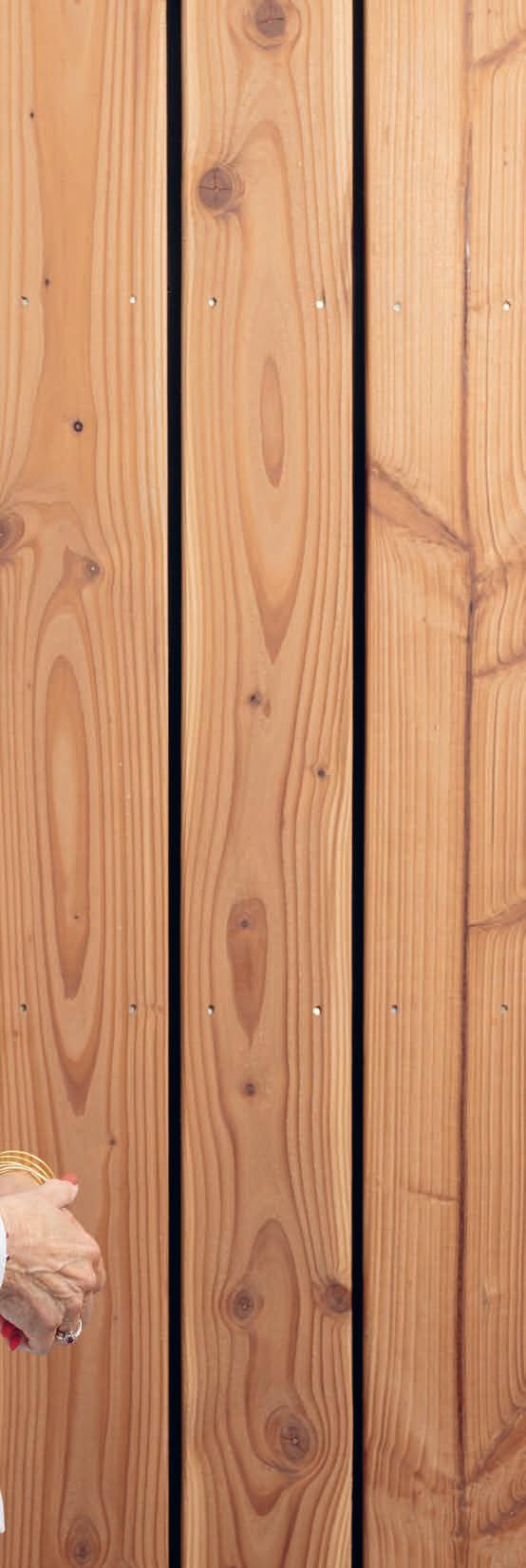
04 • 2023
years ago. After the plans for the medical faculty fall through, the wish for a medical programme in Twente remains. ‘I remember discussing this with then-rector Frans van Vught and Louise Gunning, the president of the Association of University Hospitals at the time. She said: “This looks like a traditional medicine programme. But you’re from Twente, so where is the technical aspect? A sort of technical medicine?” That’s how the penny dropped for me. There was a gap between engineering and medicine. And we had all the necessary expertise to fill that gap.’
Although the programme starts in 2003, Miedema has to fight for the recognition of Technical Medicine. For a long time, there is resistance from the ‘conservative, maybe even fearful’ medical world, says Miedema. Because not only does she want Technical Medicine graduates to work in hospitals, she also wants the all-new occupational group to be included in the BIG Act - allowing them to perform medical acts independently. ‘We’d created a programme not everyone welcomed with open arms. I’m not someone who fights a lot,

but I’ve always fought for the programme and the people. With one message, one face, one mouth and one voice.’
For ten years, Miedema does everything she can to make sure that Technical Medicine graduates get the recognition they deserve. It earns her the questionable nickname ‘the terrier from Twente’ in the corridors of the Ministry of Education, Culture and Science. ‘I considered it a badge of honour, because like a terrier, I sink my teeth into things and don’t let go. I can be very single-minded in my pursuit of a goal, but I’m never rigid. I think people in my immediate circle will confirm that I am a kind person. The outside world only ever saw the outward appearance, that terrier. But there’s a discrepancy there; someone’s outward appearance does not always reflect their inner self. The fight for Technical Medicine was nothing more than a play. I was playing a role.’ Was she not afraid of losing herself in that role? ‘Sometimes you do have to be careful not to start believing in your own fairy tale too much. Fortunately, I had my home life to help with that. I would never have been able to do this without my husband and children.’
INTERVIEW CAMPUS
2015: THE PROMOTION
After all those years of fighting, Technical Medicine is provisionally included in the BIG Act in 2013. Meanwhile, Miedema is pursuing a special PhD track; she conducts research on her own programme. Physician and Engineer: And Ever The Twain Shall Meet, is the title of her PhD thesis on the design and analysis of Technical Medicine, which she defends in 2015. ‘I wanted to provide a justification, also on a scientific level. It had been at the bottom of my list for a long time, but I pushed myself to do it. It also serves as a kind of validation. The only thing I did for myself was this PhD thesis.’
2014: THE DECORATION
A year before, she receives external recognition from the people around her. She is appointed Knight in the Order of Orange-Nassau, for her work for Technical Medicine. ‘Out of the blue, my husband asked me to come along to a networking event and was suddenly extremely concerned with how I would dress. That was very unusual, but I didn’t suspect a thing. I was still completely unaware when I was making small talk with mayor Peter den Oudsten, who would later pin the decoration on me. It was such a special and utter surprise. My mother once said: you don’t raise a child for the gratitude. It wasn’t something I was looking for, but that recognition felt very nice.’
2018 AND 2019: THE GLASS CATHEDRAL AND THE BIG
It is around that time that Miedema expresses the desire for a Technical Medical Centre at the UT. ‘I showed then-rector Ed Brinksma the Technohal building, which had been empty for years after the art academy AKI left. Inspired by the LUMC’s glass building, I thought we could turn our Technohal into our own glass cathedral; everything we do at the UT in the field of healthcare housed under one roof.’ This is another thing she sinks her teeth into, refusing to let go. ‘If you want to position yourself, you shouldn’t make yourself into a doormat and then complain when people wipe their feet on you. You’d only have yourself to blame,’ she says.
In November 2018, King Willem-Alexander opens the TechMed Centre. One year later, the profession of Technical Medicine is definitively enshrined in the BIG Act. She calls it ‘the most important milestone for the programme’. ‘We started out with fifty students and two staff members back in the day. Now, we educate 1,600 students for the healthcare industry. I once wanted to design a programme that my own children would enjoy too, one that challenges students to be the best they can be and allows them to make choices. That was my promise – and a promise is a debt unpaid. I tried my absolute best.’


2024: CLOSING THE DOOR
This month, she is already saying goodbye to the health cluster at the UT. In May 2024, Miedema’s interim job at ATLAS and her employment will conclude. ‘That will be the end of it. To be perfectly honest, I’d prefer to just close the door behind me and go. But then I’d be depriving other people of the opportunity to do something. And if you think about it, that’s just as disrespectful as telling people what to do.’ But being the centre of attention is something she struggles with. ‘Even now, while doing this interview, I notice that my hands are clammy. It’s all about me, and that feels strange. Confronting. Think of that fight around the BIG register, for instance. That was never about me as a person, but about what I represented.’
Further improving the University College, that is the task she will be focusing on in the coming months. After that, her retirement will begin. ‘I think I’ll take up woodworking. I’m not very creative, per se, but I am quite handy. And if I put my chisel in the wrong place, I know I’ll have no one to blame but myself.’ What she is going to miss above all are the people and the challenges. ‘I used to toy with the idea of cutting back on work, but that doesn’t suit me. Either you have me, or you don’t. And you have me by letting me go.’ •
15 04 • 2023
‘SHOWING PEOPLE THE FUN PARTS AND THE HARD PARTS’
STUDENTS OR RESEARCHERS? PHD CANDIDATES FALL INTO A CATEGORY OF THEIR OWN. IN THIS SERIES, WE PUT DOCTORAL RESEARCHERS OF THE UNIVERSITY OF TWENTE IN THE SPOTLIGHT. THIS EPISODE GIVES THE STAGE TO FEMKE WITMANS WHO STUDIES NANOWIRES AND FEATURES AS ONE OF THE KNAW FACES OF SCIENCE.
I’ve always been curious about how things work. I was really drawn to fundamental research because it involves so many questions that are hard to answer. That motivates me to break those questions down. Even though once you do that, many more questions appear. It’s like an explosion – and it’s what motivates me.
Through an internship, I was introduced to working in industry. This experience taught me that I find doing research too interesting to let go completely. The search for a PhD position had begun.
My doctoral research focuses on nanowires, very small nanostructures that are about a thousand times smaller than a human hair. On such a small scale, physics works differently, and quantum mechanics apply. Nanowires could serve as building blocks for quantum computers, but they are rather new structures, and multiple research groups over the world are still characterizing them. I’m working with one specific type, which is a topological insulator and conducts differently than other materials. It could help us find Majorana bound states, which could be used in a fault-tolerant quantum computer.
Although my work will probably never be directly used in a quantum computer, the knowledge will help us get further towards a quantum computer, which in turn can help us solve very difficult problems that have no solutions at the moment. In a way, my research is therefore very applied and fundamental at the same time. It’s important to me
that it’s not too theoretical and abstract, that I’m still in touch with a material and work towards a goal. I want to be able to explain to others why they should care about my work.’
THE FUN PARTS AND THE HARD PARTS
‘That’s why I decided to apply to be one of the Faces of Science of KNAW (The Royal Netherlands Academy of Arts and Sciences), although I was hesitant for a long time. Ultimately, it is important to me that society knows why my research matters. Physics research can be hard to explain because most people aren’t familiar with it, while other topics – like medical research, for example – are easier to understand. I was motivated to express that. The target group of the network are students in the last years of high school, and I’d like to inspire more people to pursue physics. On top of that, I noticed that almost none of the previous Faces of Science were from the University of Twente. I wanted to show that the UT is also the place to be. It is a top tier university with a lot of good research.’
‘I want to show people what PhD life is really like. The fun parts and the hard parts. Because it doesn’t always go smoothly. The most fun part for me is the team spirit. I had a mentor during my master’s, and we had a lot of talks about the difference between doing a PhD and working in industry. She told me that PhD was a lot more individual than working in a company, but that is not necessarily what I have experienced so far. I have a great team that I discuss everything with,
PHD STORIES
Photo: Frans Nikkels Text: Michaela Nesvarova ‘
16 CAMPUS
and I love that we are working on something together. People are genuinely interested in what I do and think along.
Another great thing about doing a PhD is that you learn something new every day – which can also be the hard part, though. Because it means that every day there is something you don’t know. It can feel like everyone else knows what they are doing, except for you. That can be a bit demotivating, but it’s something you have to get through. I had a period when I felt demotivated but luckily I have good connections with many of my fellow PhDs and they helped me to get through it. Now I’m feeling inspired again and want to keep pushing until the end.’
GO WITH THE FLOW
‘I’m just starting the third year of my PhD journey and I don’t know what will come after. Industry and academia both have their own pros and cons. The main difference I’ve experienced is that industry is faster than academia. You tend to work on projects that will be applied in a couple of years, while academic research takes a lot more time. I’m enjoying academia right now because of the questions you receive from people around you. They can push you outside of the box and give you new inspiration on how to approach a problem. In a company, most knowledge is kept in-house because of competition with other companies. Academia is very open. Knowledge is shared because all scientists want to move forward. It’s a very collaborative environment.
The advice I’d give to fellow PhDs and prospective PhDs is: Go with the flow. At the beginning, I thought I’d be able to plan everything and that the research would go faster. However, sometimes you’ll find something very interesting along the way and decide to deep dive into it. This will eventually lead to good results that you are proud of, but you can’t predict if and when that will happen. It would be great if I could say this to Femke of two years ago.’ •
FACES OF SCIENCE
Faces of Science is a network of PhD candidates from all over the Netherlands. As Faces of Science, the doctoral researchers mainly focus on science communication through blogs, videos, articles, lectures, and media appearances. They write and talk about their research, but also about what the life of a young scientist entails.
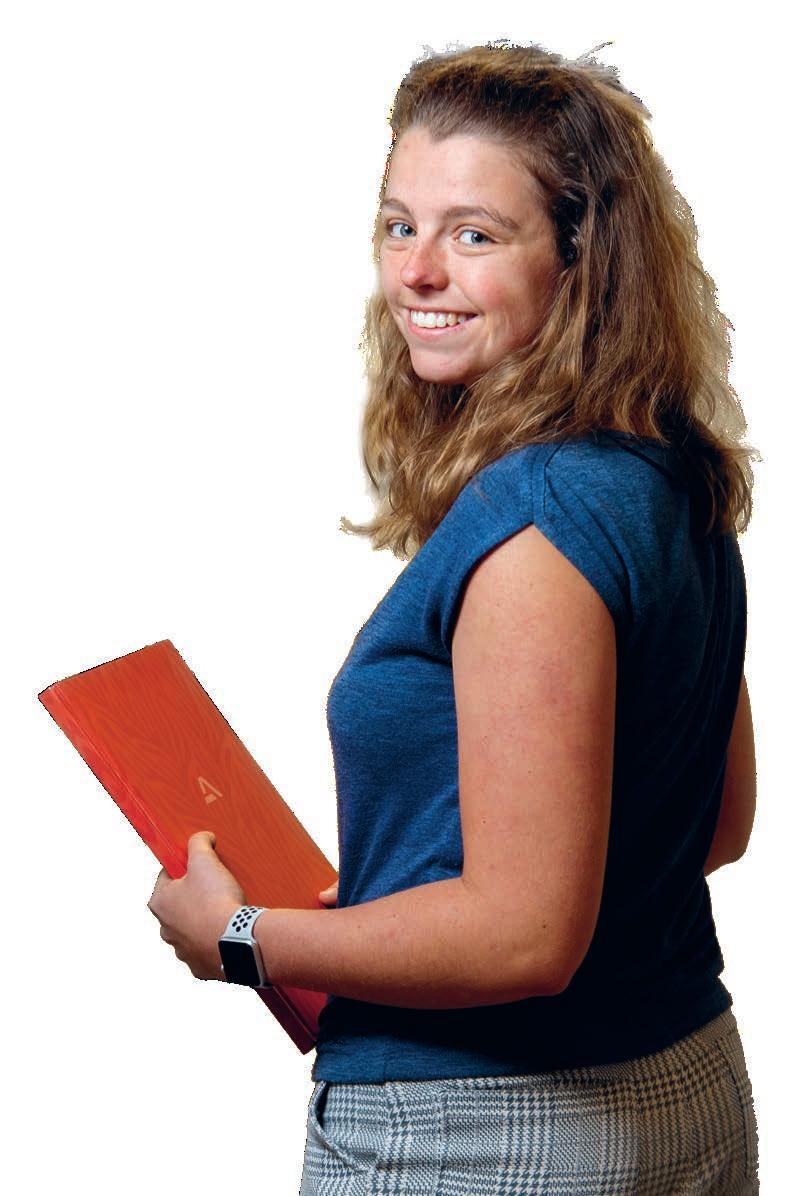
Faces of Science is an initiative of the KNAW (The Royal Netherlands Academy of Arts and Sciences), De Jonge Akademie (The Young Academy) and NEMO Kennislink. Since its inception in 2013, 114 PhD students have been selected as Faces of Science –three of them from the University of Twente: Clara Stegehuis, Koen de Koning and Femke Witmans.
FEMKE WITMANS
PhD research topic
Higher order topological nano devices (HOTNANO).
Work
PhD candidate in the departments Nano Electronics (Faculty of Electrical Engineering, Mathematics and Computer Science) and Interfaces and Correlated Electron Systems / Quantum Transport in Matter (Faculty of Science and Technology), University of Twente.
Education
Master’s degree in Material Physics at the University of Twente. Originally from Arnhem, the Netherlands.
17 04 • 2023
INTO THE UNKNOWN
‘YOU’RE NEVER GOING TO MARKET YOUR VERY FIRST IDEA’
A SAFE PLACE TO CHARGE E-BIKE BATTERIES CALLED CHARGEHYVE; THAT IS WHAT UT MECHANICAL ENGINEERING STUDENT AND ENTREPRENEUR JORG

WELLINK HAS BEEN WORKING ON FOR THE PAST FEW YEARS. HE TALKS ABOUT A SO FAR SUCCESSFUL ENTREPRENEURIAL DEBUT AND THE MANY LESSONS LEARNED ALONG THE WAY.
The combination of engineering and entrepreneurship: Jorg Wellink (24) had been looking for that even before he started studying the Advanced Technology programme. He became fascinated by sustainability, in particular circularity and mobility. In 2019, he participated in the UT Challenge, scoring second place in the start-up category of the UT Entrepreneurial Challenge. Suddenly, he was both a student and an entrepreneur.
FIRE-SAFE BATTERY CHARGING

As a consequence of that busy schedule, Wellink received a negative binding education recommendation after his first year. ‘Entrepreneurship and studying is a nearly impossible combination, especially in your first year of study,’ says Wellink. But switching to the Mechanical Engineering programme turned out to be the silver bullet. ‘Advanced Technology was a bit too wide and abstract for me. But Mechanical Engineering suited me. Turning an idea into something concrete really appealed to me.’
And so, Wellink kept perfecting his original idea; a charging station for e-bikes, which only just fell short of the main prize during the UT Challenge. VolkerWessels Telecom helped him with this by giving him tips. ‘They said: don’t focus on the energy supply side, like solar energy. There are plenty of people already working on that, you wouldn’t be able to distinguish yourself in that field.’ That is why Wellink decided to focus more specifically on safety. ‘Among the somewhat under-reported problems with e-bikes are the theft of expensive chargers and batteries and, most importantly, the fire hazard. In the Netherlands alone, there are two fires a week caused by charging e-bike batteries. This can have disastrous consequences.’
KEEP MOVING
And so, gradually, the ChargeHyve was developed: a honeycombshaped locker for e-bike batteries with the fire safety of an actual safe. ‘We conducted a fire test with our prototype together with the fire brigade at Technology Base Twente. It proved resistant to temperatures of up to 1,300 degrees Celsius.’ Last summer, the first pilots with the ChargeHyve took place, at Demcon and Nederlandse
18 CAMPUS
Photos: Rikkert Harink Text: Rense Kuipers
Gasunie, among others. ‘It’s pretty cool that we’ve reached this point. As an entrepreneur, you're often caught up in the hustle and bustle of everyday life. As a result, you hardly ever stop to think about what you’ve already achieved.’
Because the road to such a milestone is full of crucial lessons, shares the young entrepreneur. ‘You’re never going to market your very first idea in its original form. But that idea is what makes you take the plunge. After that, you have to make pivots, alter your course and constantly adjust your idea in order to achieve success.’ An essential part of this is listening to others, says Wellink. ‘That’s also why you shouldn’t shy away from sharing your idea with others. Sometimes the feedback or criticism you receive may be hard to swallow, but it will help you strengthen your own idea.’
TIME, MONEY AND TALENT
According to Wellink, entrepreneurship is mainly trying to get the most out of three different factors: time, money and talent. ‘There is an infinite amount of things you can do, but time is always a limiting factor.’ Acquiring funding is also no easy feat for a start-up, he continues. ‘What definitely helps in the beginning is participating in competitions. That’s how we landed the One Young World Scholarship, from Shell no less. Later, we looked at a loan - Novel-T’s TOP loan - which was the final step before focusing on investors. In our first round, we raised 310 thousand euros.’
And then there is the talent factor. The ReCycleWell team now consists of nine people. ‘Mainly students. You shouldn't expect a lot of money; we tell them so right away. But if you’re looking for challenges, flexibility and freedom, you’ve come to the right place. We have a diverse and international team and work from different perspectives on a multidisciplinary and circular product. What connects us is that we all share the enthusiasm to create something that helps society.’
‘A MATTER OF DOING IT’
Wellink and his team are on the verge of a new phase. When the pilots are over, he intends to conquer the market. If it were up to him, we will soon find ChargeHyves in all kinds of businesses, hospitality venues and public spaces all over the Netherlands. ‘But we also definitely have the ambition to scale up for the European market. We’re convinced that our product solves a problem, but it’s always uncertain whether the market is ready for your product.’
What if it doesn’t work out? ‘Then I’ll try again, with a different idea. It’s just a matter of doing it; you shouldn’t let anything stand in your way. It actually took quite some time for my friends and family to change from critics to supporters. In order to reassure them, I said: In the worst case scenario, if it really doesn’t work out, I’ll have learned a lot from it.’ •

19 04 • 2023


INTERVIEW
Photos: Rikkert Harink
20 CAMPUS
Text: Rense Kuipers
‘GOING FOR A WALK IS EASY AND FUN’
HE PUT HIS STUDIES ON HOLD FOR SIX MONTHS TO SET UP A WALKING GROUP FOR PEOPLE WITH DIABETES - A CONDITION HE SUFFERS FROM HIMSELF. LARS OOMKES (23), BRAND-NEW HEALTH SCIENCES ALUMNUS, CONTINUED ORGANIZING HIS WALKS THIS YEAR TOO, WITH A NEW AND BIGGER GROUP.
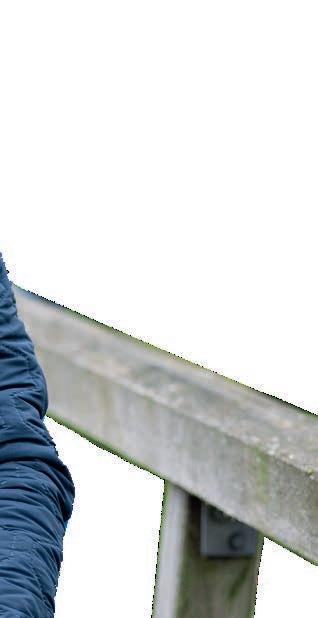

21 04 • 2023
Developing yourself outside the lecture halls - that is something many UT students enjoy: a board year, committee work, a student team, an internship abroad... Lars Oomkes opted for something different last year, just before starting his master’s project. ‘I’d been stuck at home sitting behind my laptop for a good part of my studies due to COVID-19, and at some point I thought: am I even ready to start working? Health Sciences is a great programme aimed at improving healthcare. But I was still unsure about how to put it into practice.’
By chance, Oomkes stumbled upon the National Diabetes Challenge, organised by the foundation of former professional volleyball player Bas van de Goor and promoted in the region by the organisation Twentse Koers, to get people moving. Oomkes, who lives in Lonneker, heard that they were in need of a group leader in the neighbouring town of Losser.
LEAPS AND BOUNDS
He put up a few flyers at the GP’s office, and before long, he was in charge of a group of eight people. ‘People who - with all due respect - were not the fittest and were struggling with diabetes or pre-diabetes, high blood pressure or simply had difficulty exercising. We started at the local athletics track, but the first participant gave up after only half a lap. I didn’t really have any coaching experience, but I did want to motivate the group. I drew a line on the ground with a piece of chalk, so that the following week we could walk further than those two hundred metres.’ By literally making strides each week, the participants improved by leaps and bounds. Those first tiresome two hundred metres turned into 6.2 kilometres six months later. And on top of that, there were positive health effects, says Oomkes. ‘One participant lost 20 kilos in six months. And a few other participants could cut back their diabetes medication intake by 75 per cent.’ Moreover, it helped participants break out of their social isolation, he says. ‘At one point, an 87-year-old man joined the group, a two-time widower. The social aspect was also very important; we always drank a cup of coffee together afterwards. And we still do.’
‘I’M JUST LARS’
Last May, Oomkes started a new group. With new challenges. ‘We’re now with seventeen people, including five from last year’s group. That makes it a bit harder to divide the attention, not to mention the
difference in the participants’ fitness levels. But we have a WhatsApp group in which I share videos, for example, and this year, the Bas van de Goor Foundation shared a programme book containing exercises. That provides a bit more guidance.’
Oomkes also reached out to a few professionals. ‘A physiotherapist, podiatrist and a community sports coach have previously joined our walks,’ he says. They were able to help participants with tips on health and what sports are available in the area.’ Because the ideal scenario is for people to keep exercising, even after the National Diabetes Challenge. ‘When I was diagnosed with type 1 diabetes at the age of sixteen and heard about the possible complications, I decided that I had to stay on top of this. I started exercising a lot, mainly fitness. There are more than forty factors that affect your blood sugar levels, but by practising sports and exercising you can control all of that much better. I don’t want to let it rule my life too much. I’m just Lars.’
INTERESTING TURN
Thanks to this little side-step from his studies, his life took an interesting turn. UT alumna in Health Sciences Elise Hol, director at Twentse Koers, joined in on one of his walks. Before he knew it, he had landed a final master’s project there. He has also been working at the healthcare organisation since August. Although Oomkes had been busy with his thesis in the months prior to that, he faithfully kept walking with the group every Friday morning. ‘Sometimes I had to motivate myself beforehand to maintain discipline. But afterwards, I’d always go home with a smile; every single time.’
It would be a good idea to start a similar initiative at the UT, thinks the new alumnus. ‘I’ve already discussed this with people from physiotherapy practice Topvorm Twente. The ambition for such a walking group is there, but it would have to be facilitated. And why not? There are many students who don’t feel like they belong in a team or performance sport and stay at home instead - maybe feeling lonely. So why not come for a walk? It’s easy and fun.’ •
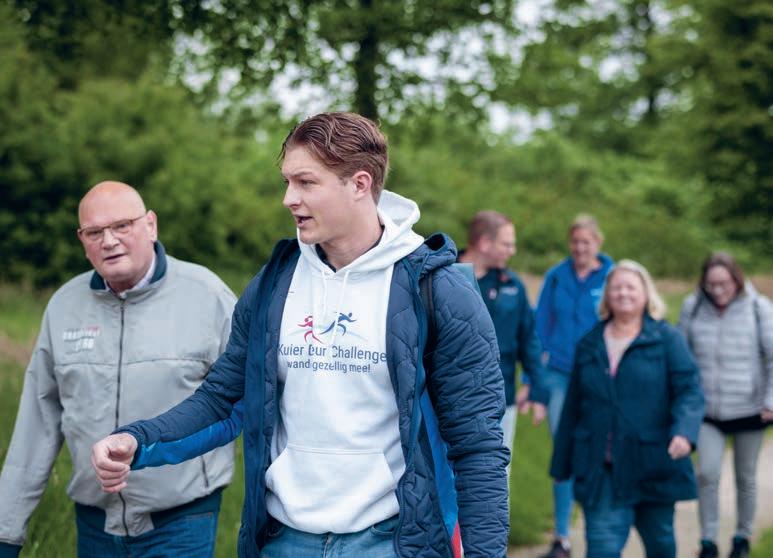
INTERVIEW
22 CAMPUS
‘ I ’d always go home with a smile afterwards ; every single time ’
‘I DON’T UNDERSTAND THE DEBATE ON INTER NATIONALISATION’
Sylvia Butzke has been chair of UT’s Supervisory Board for over two years. We ask her five questions about her term thus far and the educational developments currently discussed in The Hague.

IN YOUR FIRST WEEKS AS CHAIR, YOU MENTIONED THAT SOMETHING WAS MISSING BETWEEN HIGH TECH, HUMAN TOUCH AND SHAPING. DO YOU NOW KNOW WHAT THAT WAS? AND HAS THAT IMPROVED?
‘As an organisation, it is important to act on the basis of identity. Who am I and who do I want to be? That’s more than just a slogan; it’s a question you constantly have to keep asking yourself. Shaping is an excellent strategy, but I felt it was insufficiently rooted in the UT’s intended identity. Steps have been taken to remedy this and at the end of last year, rector Tom Veldkamp clearly defined the intended identity of the UT as a fourth generation university, in which research creates impact and the leading principle is solving societal problems. With its entrepreneurial character, the UT has the opportunity to become a frontrunner in that respect.’
01 02
YOU ALSO ADDRESSED THE UT’S GROWTH AT THE TIME. DUE TO SEVERAL DEVELOPMENTS, IT SEEMS GROWTH IS NOT ON THE CARDS FOR NOW. ENGLISH AS THE WORKING LANGUAGE IS ALSO UNDER POLITICAL PRESSURE. WHAT IS YOUR PERSPECTIVE ON THIS?
‘With all the challenges ahead, society needs more technically skilled people. That is why I don’t understand the discussion on internationalisation. The debate revolves around funding and market share as opposed to the question: what do we need as a society and how do we structure our universities accordingly? The topic of international students is part of this.
The same goes for the working language. It’s a rigid debate that’s all about win or lose, black or white. Dutch culture is deeply rooted in the Dutch language and nobody intends to ban that language from the UT. That said, science is an international affair and the working language is English, especially in engineering. I support the UT’s pragmatic stance in this debate to maintain both languages.’
IN THE FACE OF THE ABOVE UNCERTAINTIES, HIGH ENERGY PRICES AND INFLATION: SHOULD THE UT TAKE A STEP BACK FINANCIALLY?
‘That depends on what you mean by that. It’s important to be able to adjust one’s course and be agile. I’m not worried about the budget, the ratios are still good. But for the first time in a long time, we can't just give the go-ahead to every single project that comes our way. Suppose a construction project turns out to be much more expensive than expected; what does that mean for your budget? Do you have to adjust your plans? It’s important to have a clear picture of your goals.’
THE EXECUTIVE BOARD IN ITS CURRENT FORM IS ABOUT HALFWAY THROUGH ITS TERM. HOW DO YOU LOOK BACK ON THESE TWO YEARS?
‘I think the right steps are being taken. In the Supervisory Board and Executive Board, the aim is to engage in constructive dialogue with each other instead of just ticking off points on the agenda. The Executive Board is working on a culture change towards more responsibility and to this end, it’s handing over ownership to faculties. That is a good thing and it befits a fourth-generation university.’
03 04 05
HOW COULD THE UT DISTINGUISH ITSELF EVEN MORE?
‘I think the UT could leverage its strengths even more and showcase them even better. Focus on impact, entrepreneurship, innovation and multidisciplinary as the directions of the future. Drawing on these strengths, the UT could assume an even more powerful role in the region. I also feel a great sense of connection at the UT, which inspires confidence to push forward together. Those are great conditions, which many other universities would envy.’ •
Photo: UT archive Text: Stan Waning
FIVE QUESTIONS
23 04 • 2023
BLOWN AWAY

Connecting science and society is what UT's Open House is all about. During the event, the university is opened to the public and scientists show what they have in store. One such example is the laboratory of the Engineering Fluid Dynamics (EFD) research group. The test facility in the Horst is better known as 'the silent wind tunnel', because the noise produced by the airflow is absorbed by the insulation material on the walls. The room is suitable for testing applications in aviation, drones or household appliances, where aerodynamics and noise are involved. In this case, the audience sees how an airflow, which is visible using a smoke beam, is made as efficient as possible. The experiment seems successful: full of amazement and focus, the assembled audience watches the demonstration. Exactly how the Open House is meant to be. •
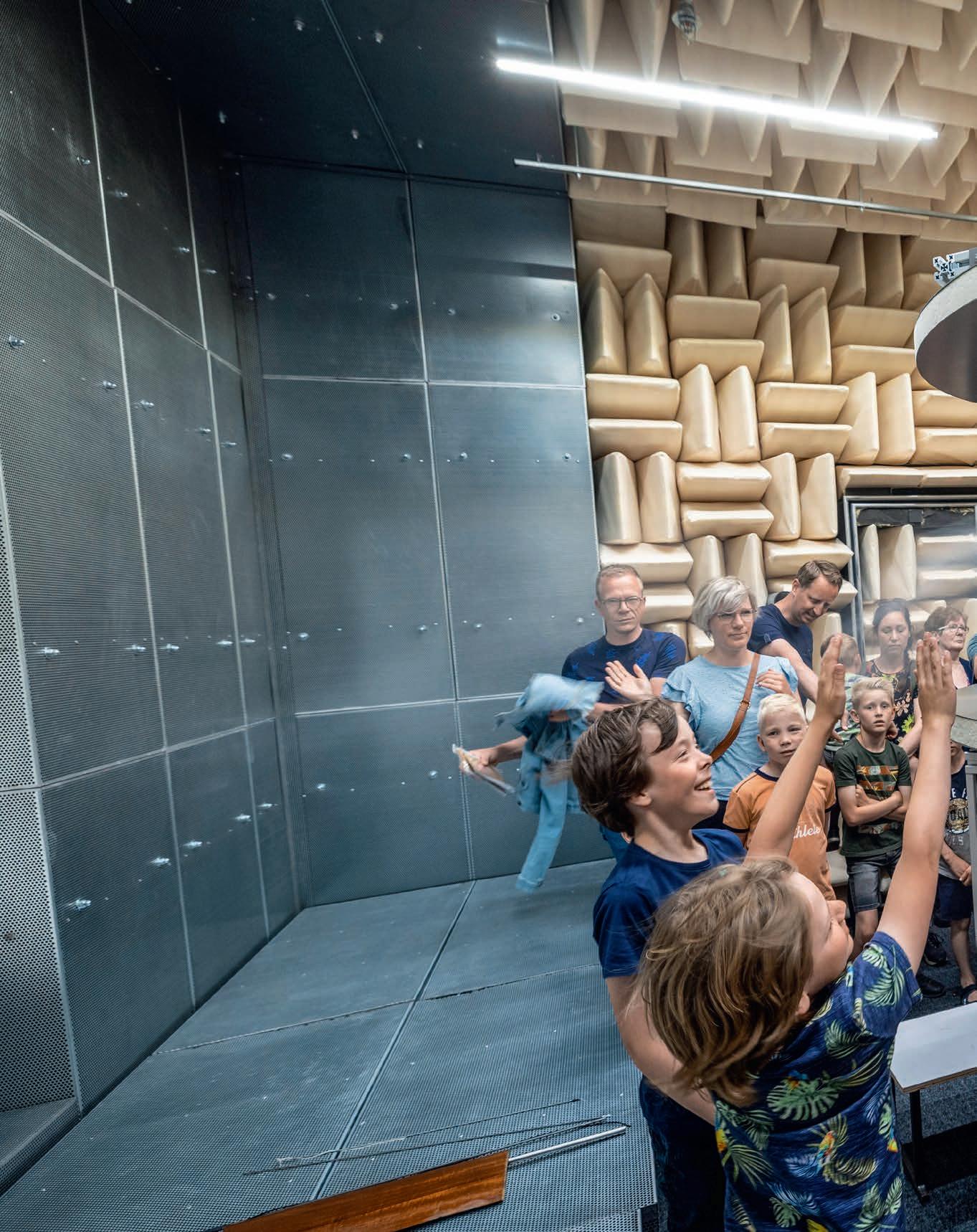
IN THE PICTURE
24 CAMPUS
Photo: Rikkert Harink Text: Jelle Posthuma
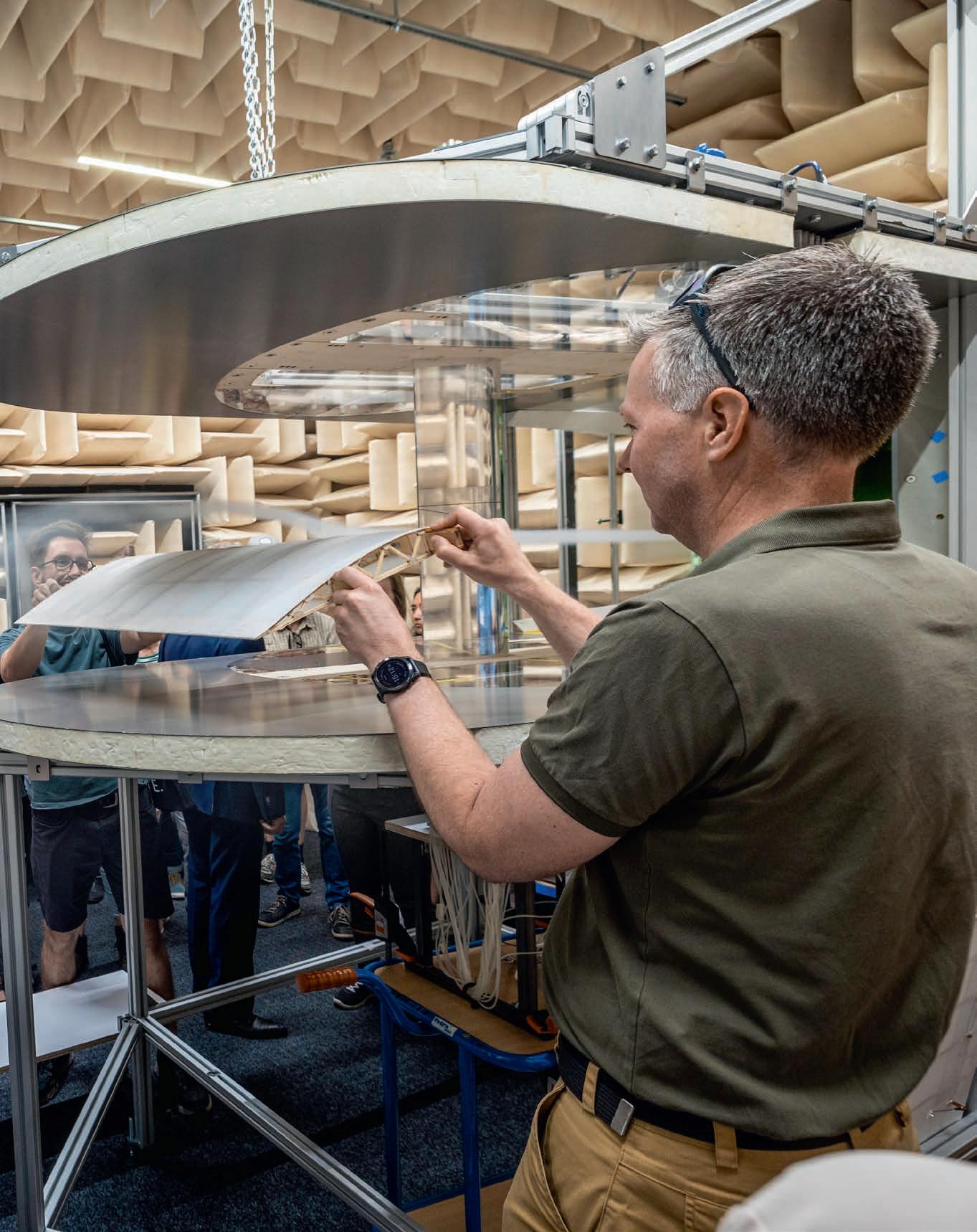

04 • 2023


RESEARCH Illustrations & text: Enith Vlooswijk 26 CAMPUS
USING LLAMA BLOOD TO RELIEVE OSTEOARTHRITIS PAIN
LLAMA BLOOD CONTAINS ANTIBODIES THAT MAY POTENTIALLY RELIEVE THE PAIN OF OSTEOARTHRITIS PATIENTS. UT PROFESSOR MARCEL KARPERIEN IS WORKING ON A TECHNOLOGY TO ADMINISTER THESE ANTIBODIES. ALTHOUGH THE COMBINATION OF SCIENCE AND ENTREPRENEURSHIP SOMETIMES LEADS TO CLASHING INTERESTS, KARPERIEN SAYS THAT THE UNIVERSITY AND BUSINESS COMMUNITY SORELY NEED EACH OTHER.
I‘wanted to see where this could lead,’ says Karperien, explaining the early history of Orthos Medical, the Twente spin-off that he founded five years ago together with Theo Verrips, professor at Utrecht University. ‘I was developing applications of tissue engineering at the time and Theo was working on a very interesting technology, based on llama antibodies. I wanted to know whether we could bring those technologies together.’
That turned out to be the case. Orthos Medical focuses on osteoarthritis, a joint disorder that affects about one and a half million Dutch people. What exactly causes it is unknown, but the condition always leads to the degeneration of cartilage located at the ends of the bones in a joint. The membrane in the joint capsule then starts producing inflammatory substances, the synovial fluid
gradually loses its lubricating function and bone ends become more brittle and change shape. The result: stiffness and pain during movement, often in the knee, hip, or shoulder joint.
Patients can take daily painkillers to relieve the pain of a chronic condition like osteoarthritis. However, this means the medicine spreads throughout the entire body, which can have unpleasant side effects in the long term. By injecting antibodies directly into the joint, it may be possible to treat the pain in a very targeted and local manner.
‘The pain is caused by growth factors that are released and affect the nerve cells,’ Karperien explains. ‘If we can get antibodies to bind to those growth factors, they are removed by macrophages, a sort of “clean-up” cells.’ This does not eliminate the cause of the disease, although Karperien hopes that alleviating the pain will help break the

27 04 • 2023
vicious cycle of inflammation and degeneration that so characterises osteoarthritis. But why does this require llama blood, what role does tissue engineering play in this and does it actually work?
LLAMA BLOOD
Antibodies are proteins that protect us from diseases. They bind to invading organisms, such as viruses and bacteria, and are then cleaned up by the body. This prevents the pathogens from entering our cells. Llama blood contains antibodies that are very well suited for use in medication. ‘The antibodies’ molecular weight is much lower and they’re up to 10 times smaller than human antibodies,’ says Karperien. ‘But they’re just as effective. Moreover, they’re very stable: they can withstand temperature changes very well and remain intact in organic solvents. We wouldn’t be able to do this with conventional antibodies.’
But that is not to say that every treatment requires antibodies from llama blood: Orthos Medical aims to replicate the antibodies found in llama blood using yeast cells. If you present yeast cells with the right DNA sequence that codes for the antibody in question, they will start enthusiastically producing these antibodies.
There is also a downside to the antibodies being so small: it means they can quickly leak out of the joint again. And of course, And of course, patients would rather not have their joints injected with antibodies on daily basis. This problem can be avoided through the use of polymers that are also applied in tissue engineering, Karperien’s area of expertise. ‘We package the antibodies in biodegradable polymers, thus creating very stable structures that slowly release the antibodies. That way, the patient only has to see the doctor for a new injection once every few months.’
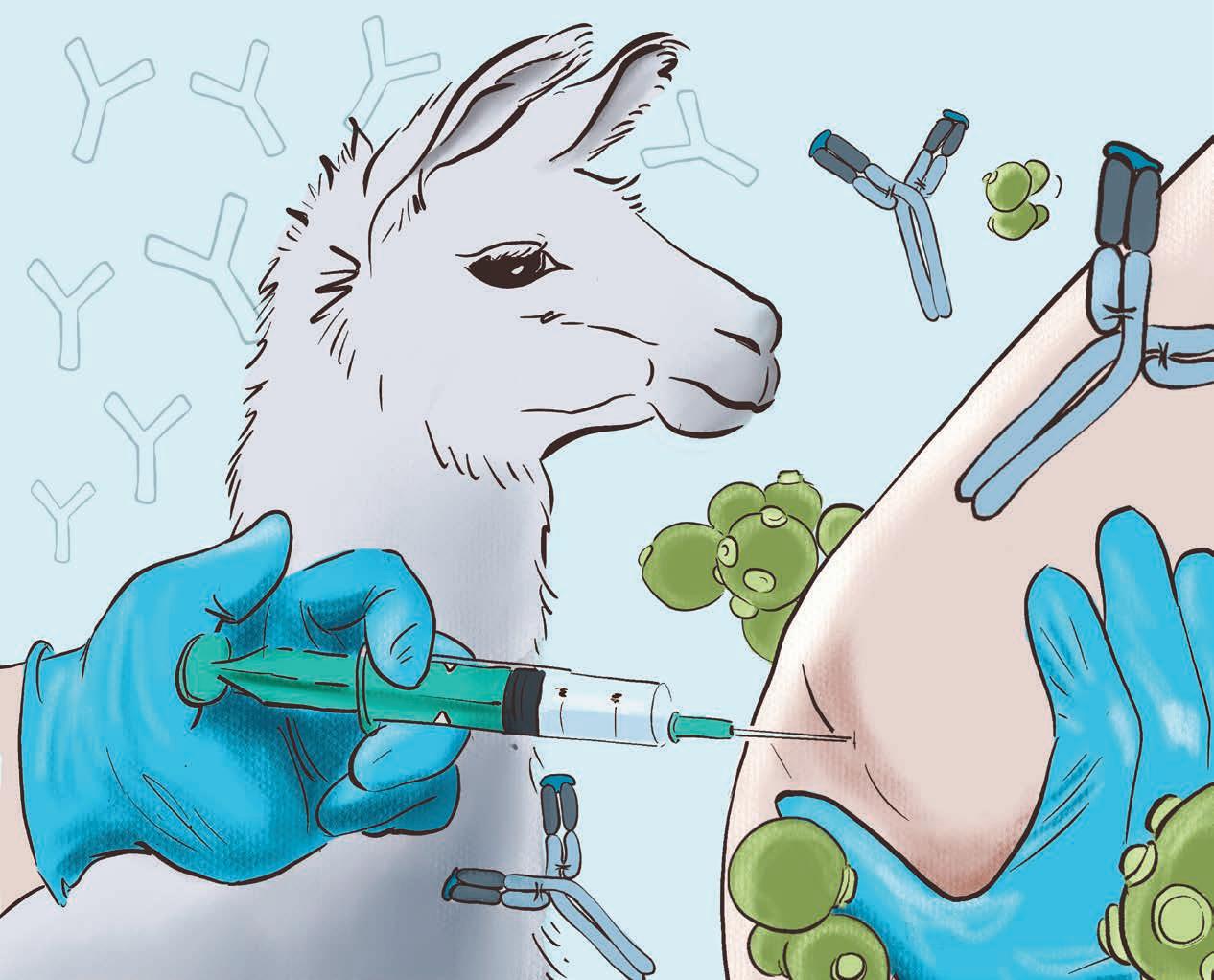
RESEARCH 28 CAMPUS
RAT GAITS
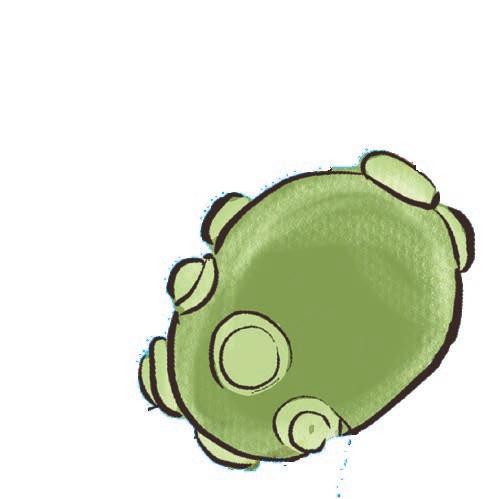
It sounds good, but does it actually work? It does in rats, says Karperien. The researchers treated rats with osteoarthritis and then conducted a pain test. This involves the rat walking over a sensitive plate that measures how much pressure the animal exerts with each of its paws. A healthy rat has a balanced gait; a rat that’s in pain will limp slightly, or in other words, exert more pressure with one paw than the other. The initial results show that after administration of the antibodies, rats with osteoarthritis have a more balanced gait, meaning that they suffer from less pain.
Just how many rats this applies to and exactly how much it has improved their gait, Karperien cannot yet say: the experiments are still ongoing. So he cannot yet refer to published results, which have been critically peer-reviewed by independent colleagues. Nevertheless, he is optimistic. ‘The results are promising. In the optimistic scenario, we will be testing it out on dog patients in early 2024. A clinical trial on humans is planned for late 2025, early 2026. That is, if everything goes well and there are no setbacks.’
Such setbacks are not inconceivable. For one thing, we would already be rid of quite a few nasty lifestyle diseases if people responded to experimental drugs in the same way that rats do. Unfortunately, that is not the case; humans and rats are very different. What’s more, it is possible that the human body will turn against the administered antibodies after a while, Karperien says. ‘What happens when you treat rheumatoid arthritis with antibodies is that the body starts to form its own antibodies against the injected antibodies. As a result, they become less effective and the doctor has to inject higher concentrations. This could conceivably happen here too.’
The reason why he is not too worried about this is because the llama blood antibodies he uses are so small. ‘They contain only the part of the protein that binds to the antigen, the growth factor NGF that causes pain,’ Karperien explains. ‘That part is very similar to all the antibodies produced by the immune system itself. So our body is not very likely to recognise that structure as alien.’
CLASHING INTERESTS
The professor spends over 20% of his time on research for his spin-off. In addition to Orthos Medical, he founded two other

medical spin-offs, Hy2Care and LipoCoat. It is precisely that combination of research and entrepreneurship that makes his work so interesting, he thinks. ‘I consider simultaneously running a company and conducting scientific research as the best way to make a real impact. The university is a great place to do research, but there are too many examples of research dying a premature death on the lab table. If I really want to make an impact, I have to bring what I develop to the patients.’
When asked whether research and entrepreneurship can also clash sometimes, he doesn’t have to think long. ‘It’s always possible for clashing interests to arise. In that case, our policy is for someone else in the faculty to make the decision. Let’s say the company produces some antigens that I’d be interested in testing out in research projects. I would have to buy those antigens from the company. Someone else would then have to take a very critical look at that. I wouldn’t be able to make any decisions in that process.’
He thinks the recent articles in the media about excessive corporate influence on university research are ‘somewhat tendentious’. ‘Yes, big companies like Shell and Philips sometimes sponsor chairs at universities. In all such cases, the university makes an overview of the activities undertaken by the professor in question. In doing so, the university always stipulates that the academic freedom of the professor in question may never be compromised. It’s not like Shell can lay down what’s going to happen in detail.’
According to the professor, that would not even be in the companies’ interest. ‘Those big companies turn to universities because they know that scientific research is needed for innovation, including the innovation of their products and business models. Research within the company itself often results in much less creativity than funding research at the university. So for them, it’s a way to have high-quality research conducted. And if it yields new ideas, then they’re first in line to incorporate it into their business. I think that’s something we should encourage.’
29 04 • 2023
2003 THE BIRTH OF SOLAR TEAM TWENTE
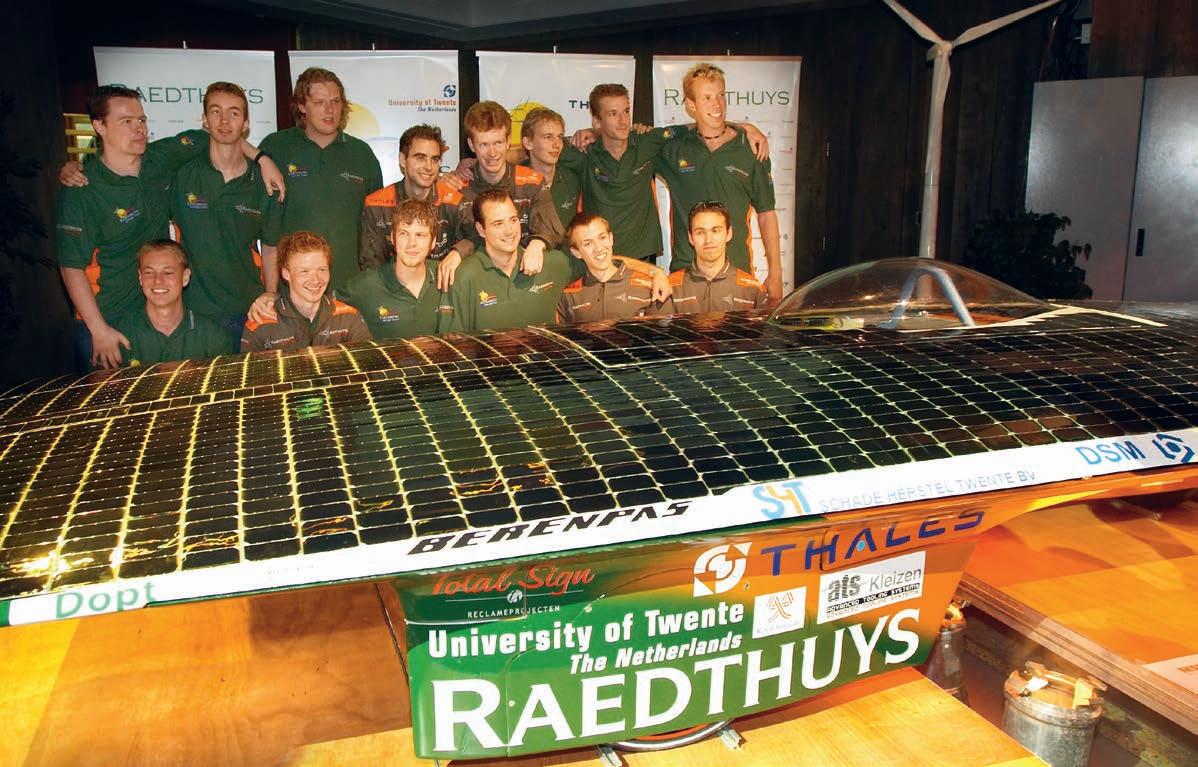
IN ‘BACK TO THE YEAR’ WE REVIVE BYGONE CAMPUS TIMES WITH REMARKABLE STORIES. IN THIS EPISODE, WE GO BACK TO THE YEAR 2003, WHICH SAW THE FORMATION OF THE FIRST SOLAR TEAM TWENTE.

BACK TO THE YEAR Photos: UT archive Text: Jelle Posthuma 30 CAMPUS
The history of the Solar Team Twente starts exactly twenty years ago, in 2003. Joost Kuckartz, who is studying Electrical Engineering at the UT at the time, sits in his student room and watches a film that will change his life. The film is called Race the Sun and tells the story of a group of Hawaiian high school students who compete in the World Solar Challenge in Australia with a self-built solar-powered car. The lead roles are played by Halle Berry and James Belushi.
After seeing the film, Kuckartz, who has been fascinated by technology since childhood, decides to build a solar car too. Not entirely coincidentally, TU Delft regularly makes the news with its solar car Nuna in those years. The Twente bachelor's student tries his luck with the Delft team. He is invited for an interview but eventually, he is turned down: the Delft team is only looking for master’s students, preferably from the Aerospace Engineering study programme.
STARTING FROM SCRATCH
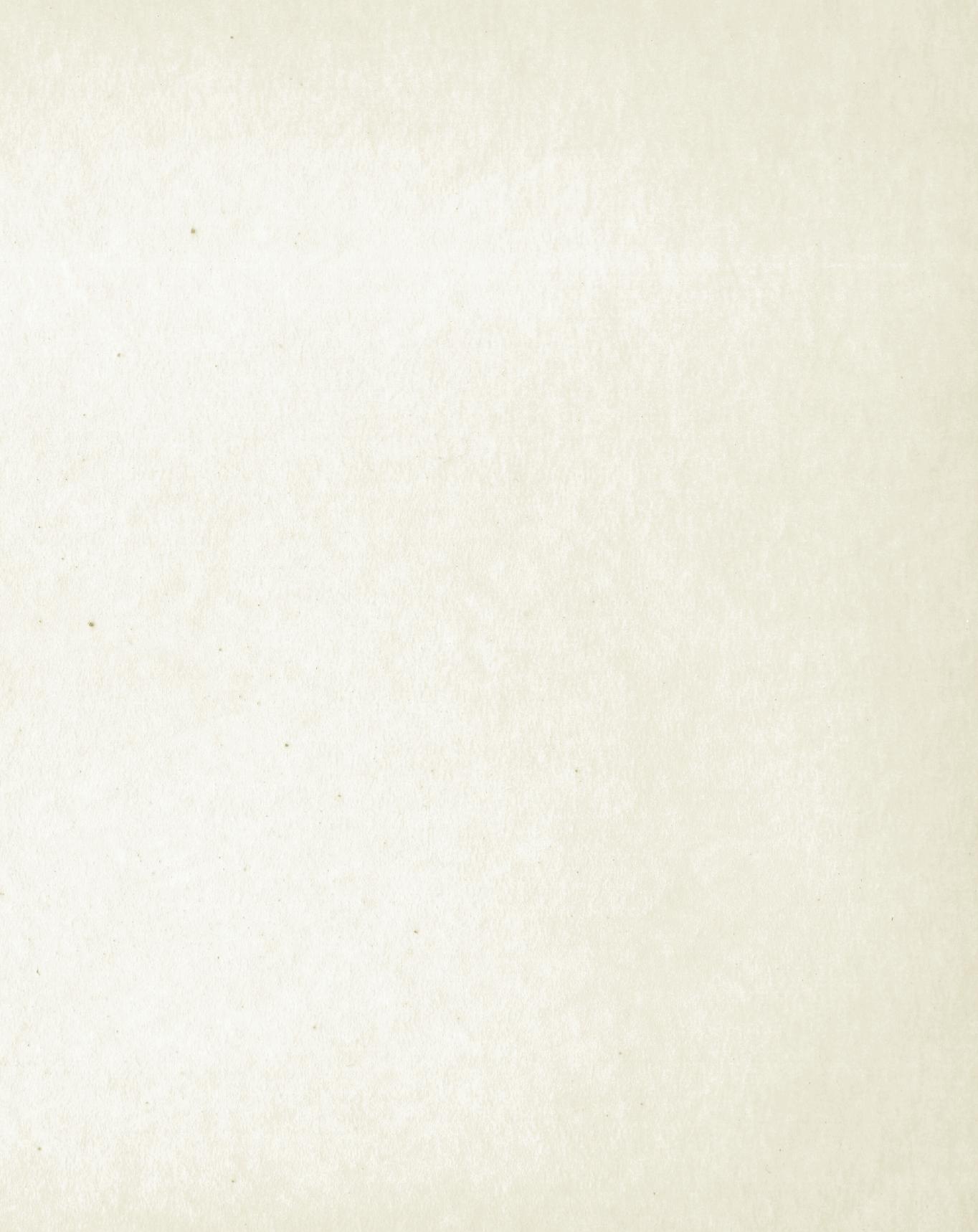
The Electrical Engineering student is not giving up. During a meeting with the UT rector, Frans van Vught at that time, Kuckartz makes a bold move. ‘I told him: I want to start my own team to build a solar car. 'Go ahead', said Van Vught. 'We’re an entrepreneurial university, after all'.’ And so it happened. Kuckartz puts up self-made posters all over campus to recruit team members. ‘Fifteen people responded, all of whom ended up on the team. We didn’t do interviews. We had people from all faculties and programmes, from Electrical Engineering to Public Administration. That’s what made us unique.’
The newly formed team is given a space in Langezijds, which is now the new home of the ITC faculty but back then housed the Chemical Engineering department. The goal is to compete in the World Solar Challenge in 2005. ‘In the basement, between the building’s pumping equipment, we got to work on our car and upstairs we had an office with computers.’ The team has to start from scratch. In order to gain inspiration, the team members travel to Greece where a solar car race is organised just before the Olympics. ‘We learned a lot there and made a few contacts. The other solar teams were very open and shared their knowledge.’
WHO WILL BE THE MAIN SPONSOR?
There are also several companies in the area that are willing to help, mostly with in-kind support. For instance, the students get to use Thales’ workshop, where most of the car is built. But finding a main sponsor proves to be a real pain in the neck. Especially the gallium arsenide solar cells, Kuckartz’s speciality, are a costly affair. It even leads to a rift in the team. ‘Shortly before the World Solar Challenge, which was to take place in 2005, we still didn’t have a main sponsor. Some of the team members then decided to quit. They thought it wasn’t feasible.’
But there is also a group that decides to push ahead. And that is a good thing because a mere three months before the race, the team manages to find a main sponsor: investment company Raedthuys. The Solar Team can finally start building. ‘The designs for the car were ready but we had to put the car together in two to three months. Eventually,
we succeeded, but we hardly got to test it. The first extensive test was in Australia, on the first day of racing.’
BEST NEWCOMER
In late September 2005, the World Solar Challenge kicks off. Twente’s first solar car, named SolUTra, tears down the long-stretched roads of the Australian Outback. Although the car also frequently comes to a halt. ‘We had a lot of problems with the tyres. I think we got a total of thirty tyre punctures. We also had to continue working on the car every night during the race. It teaches you how to work flexibly. You constantly have to try out new things because there was no protocol in place.’
In spite of the tyre problems, the race is an amazing experience for the team members, says Kuckartz. ‘We spent a year and a half working on it full-time, most of us put our studies on hold for it. Ultimately, the race is what you do it for. The best part was that, as a new team, we crossed the finish line in the end. Not everyone manages to do that. We claimed ninth place, and as such, we were also the best newcomer. We were very proud of that.’
LIFE EXPERIENCE
The Solar Challenge was a turning point in the life of the Electrical Engineering student. ‘After the race, we decided to go backpacking with other Solar Team members. I had never travelled far up to that point in my life, but the World Solar Challenge made me very internationally oriented. I also made several new contacts, so not much later I was asked to work on a project at the Massachusetts Institute of Technology (MIT), where we had to build four electric cars in six weeks. Eventually, I decided to do my master's abroad as well, in Taiwan to be more precise.’
After his master’s programme, Kuckartz pursues a PhD in Melbourne - that’s right: Australia. ‘There, I once again became a member of a solar team. And later on, I worked as a volunteer at the World Solar Challenge. I was involved in a total of four races. In 2011, I was tasked with monitoring Twente's then fourth Solar Team as an observer. I spoke English and they had no idea who I was. I understood everything they said to each other in Dutch. The team operated very differently, in a much more structured way. Our team had been a group of student friends, but now it was a professional student team.’
Kuckartz has been back in the Netherlands for quite some time now. But his passion for solar cars never went away. ‘My dream is to have my own solar car. I recently found one at a US start-up where they build solar cars for everyday use. I’ve already ordered one. The question is when exactly they will be available in Europe, but when the time comes, I’ll get to hit the road with my own solar car.’ •

31 04 • 2023
GUTS, THAT’S WHAT IT’S ALL ABOUT AT SOLAR TEAM TWENTE
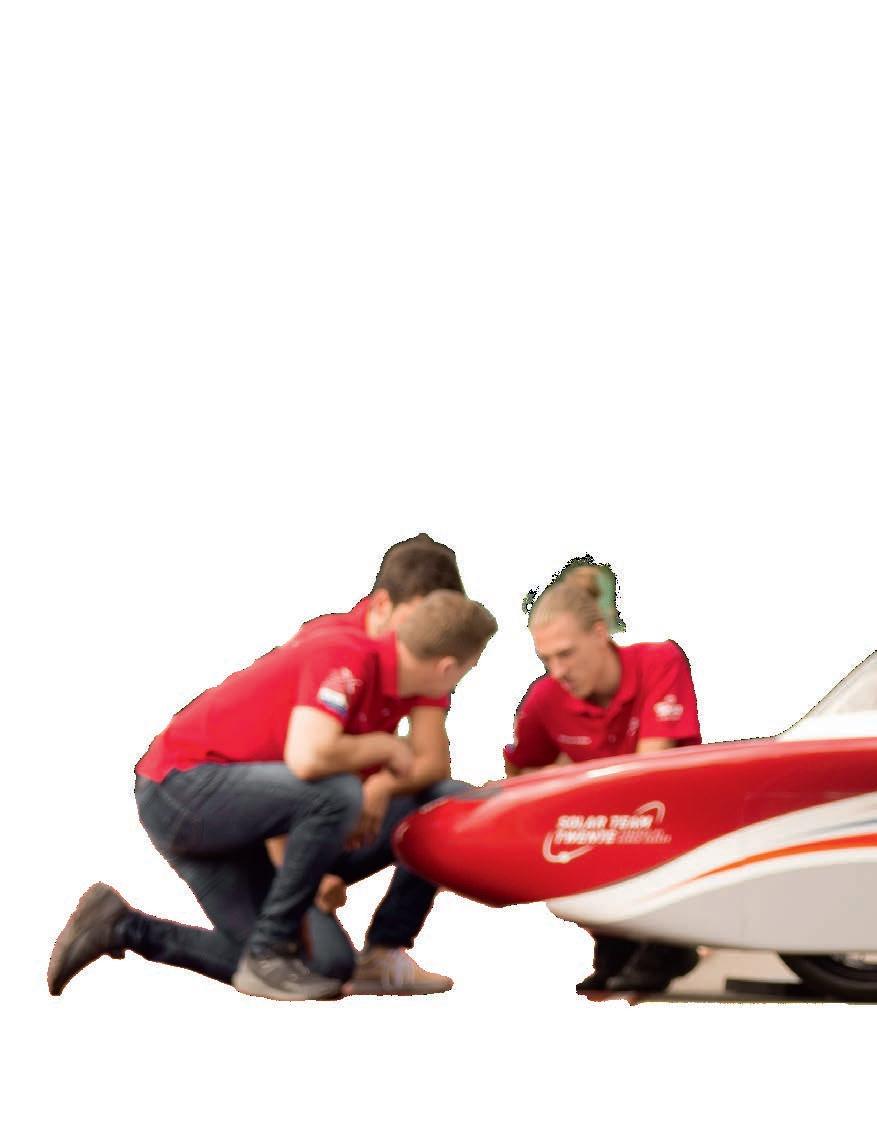
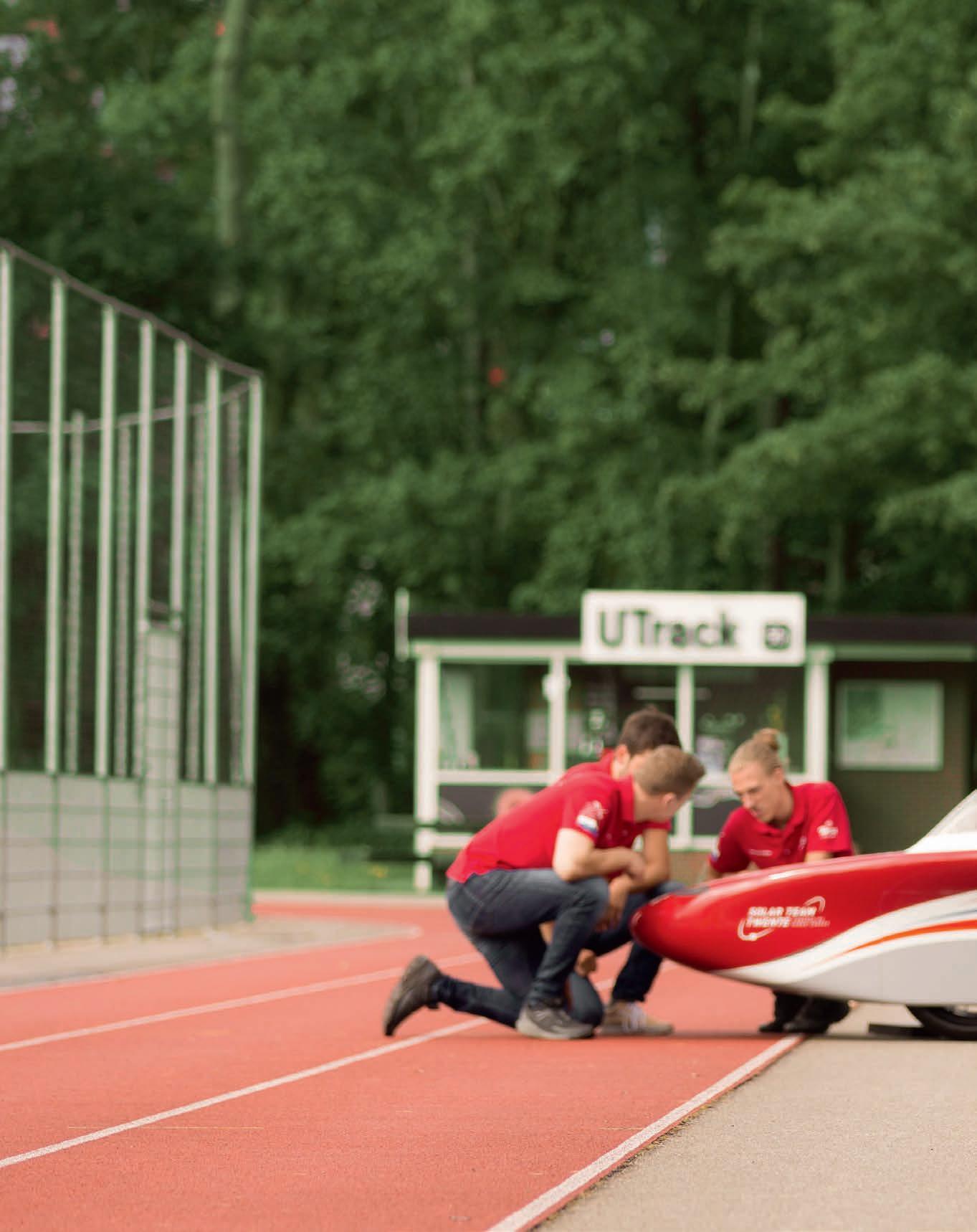
STUDENT LIFE Photos: Klaas-Jelmer Sixma Text: Jelle Posthuma
CAMPUS
THE PREVIOUS EDITION WAS CANCELLED DUE TO THE COVID-19 PANDEMIC, BUT THIS YEAR, SOLAR TEAM TWENTE WILL ONCE AGAIN TRAVEL TO AUSTRALIA TO COMPETE IN THE WORLD SOLAR CHALLENGE, THE WORLD CHAMPIONSHIP OF SOLAR-POWERED CARS. THE TEAM, WHICH IS CELEBRATING ITS 20TH ANNIVERSARY THIS YEAR, PLANS TO RACE USING ‘REVOLUTIONARY’ BATTERY TECHNOLOGY. ‘THE QUESTION IS WHETHER WE’LL MAKE IT OR NOT. IT’S GOING TO BE A RACE AGAINST TIME.’


WORLD SOLAR CHALLENGE
The course of the World Solar Challenge cuts straight through the Australian outback and covers the distance of over 3,000 kilometres. The race starts in Darwin and crosses through Alice Springs to Adelaide. Only solar-powered cars participate in the race, competing against each other in two different classes.
33 04 • 2023
On an industrial area in Enschede, between a garage door specialist and a waste processing company, is the home base of Solar Team Twente. There is no shortage of space. Kirsten Bouwman (team leader) and Daan van Haren (event coordinator) proudly show off the various rooms. A large workshop leads to a room used for testing the electric motor. The private bar down the hall betrays the fact that this space belongs to a student team. The students pass through a small room with a droning server for simulations and walk past the various meeting rooms.
On one of the walls there is a bar graph showing the team’s progress in raising the funds needed to be able to compete in Australia. With every edition, it is a challenge to raise sufficient funds, and this year is no exception. ‘Inflation is rough,’ says Bouwman. ‘It’s become much more expensive to travel to the other side of the world. On top of that we have increased costs for the premises and other things. It’s quite a financial challenge. That is why we started a crowdfunding campaign. But we’ll be going to Australia one way or another, because we want to become world champions.’
NEW TECHNOLOGY
In the reception room, Bouwman (master's student in Management of Product Development) and Van Haren (master’s student in Technical Medicine) talk about the high ambitions of the Twente Solar Team. They aspire to push boundaries and take on challenges. ‘A good example is the development of new battery technologies,’ says Bouwman. ‘We
wanted a battery with the highest possible energy density. This year, we finally found a company that can realise a very high energy density with so-called silicon-anode batteries.’
This discovery came quite late in the development process, the team leader continues. ‘We requested a quote and considered whether it would be financially feasible. Ultimately, we decided to take the risk.’ According to Van Haren, it is going to be a race against time to implement the new technology before the race in Australia. ‘But if we make it, it’ll pay off big time.’
ENERGY TRANSITION
According to the students, taking risks is in Solar Team Twente’s DNA. Ever since its foundation, twenty years ago, the team has valued guts above all else. Twente is competing in the solar race’s Challenger Class, the Formula 1 class for solar cars. ‘This class aims to force innovation. We push the limits. Solar Team Twente is basically a research institute. We design prototypes that can later be implemented on a larger scale. Take the silicon-anode batteries, for example. If they work well for us, we might find them in the latest electric cars for consumers at some point.’
According to Bouwman, solar cars can play an important role in the energy transition. ‘Maybe not so much in the Netherlands. But in other, sunny countries, you only have to charge the car a few times a year. Other than that, the car is self-sufficient, thanks to the solar panels on the roof. The big advantage is that this eliminates the need for a large-

STUDENT LIFE
SolUTra (2005) Notable: the first ever solar car from Twente. Top speed: 125 km/h. 6
9
th place in Australia.
Twente One (2007) Notable: focus on maximizing solar output. Top speed: 120 km/h.
th place in Australia.
8
21Revolution (2009) Notable: crashed, but still managed to finish.
Top speed: 125 km/h.
th place in Australia.
5
21Connect (2011) Notable: focus on aerodynamics. Top speed: 123 km/h.
th place in Australia.
THE
34 CAMPUS
The RED Engine (2013) Notable: lightest Twente solar car ever built (139kg). Top speed: 136 km/h.
3
rd place in Australia.
TWENTE SOLAR CAR THROUGHOUT THE YEARS
scale infrastructure with charging stations. The most energy-efficient solar cars can cross a continent without having to recharge.’
MILITARY STANDARDS
Solar Team Twente is celebrating its 20th anniversary this year. The team was formed in 2003 and in 2005 the Twente students competed in Australia for the first time. Bouwman and Van Haren say that a lot has changed in recent years. ‘I think we’ve become more professional,’ says Van Haren. ‘Both in the preparation for the race and during the race itself. The team’s founders told me the same thing. One example is the communication protocol for the race. We have worked hard on that for the past twenty years. We now use military standards.’
The solar car itself has also undergone a lot of changes over the past decades. Every two years, the teams create a whole new design, which means that a total of ten cars have been built to date. ‘The most noticeable difference is in the aerodynamics,’ says Bouwman. ‘By using software, we can make very accurate simulations for the aerodynamics, which was not possible twenty years ago. This has a major impact on the design. The differences are also due to the organisation’s rule changes. Sometimes teams are allowed to use four wheels and then the next edition it’s only three. Or the surface area for the solar panels has to be smaller. If the organisation doesn’t change the rules, the
teams soon all end up on the same level, thus eliminating the racing element. That would be disastrous for innovation.’
EXTRA EXCITING
According to Bouwman, it is going to be ‘extra exciting’ to see what innovations the other teams will surprise us with this year. Because of the COVID-19 pandemic, the 2021 edition could not take place. It has therefore been four years since Solar Team Twente last travelled to Australia. However, the team did participate in an alternative World Championship in Morocco in 2021, where it took overall victory. Does that make the Twente team a top favourite in Australia? That, the two students cannot say. ‘Our team did extremely well in Morocco, but it’s a very different race. Besides, only European teams participated in that race. In Australia, we will be facing teams from all over the world, which we haven’t seen for four years.’
Bouwman and Van Haren say that winning in Morocco has not led to extra pressure. ‘Rather extra motivation. Getting the first prize depends on many factors. I think it’s going to be a close battle between seven teams in Australia. In the end, victory may be decided by the smallest of things. But we’re definitely going for the win.’ •
Red One (2015)
Notable: highest end result in Australia to date.
Top speed: 139 km/h.
2nd place in Australia.
RED Shift (2017)
Notable: smaller solar panel (4m2) due to new regulations.
Top speed: 130 km/h.
5th place in Australia.
RED E (2019)
Notable: smallest solar car in the world.
Top speed: 128 km/h. Did not finish in Australia due to crash.
RED Horizon (2021)
Notable: no race due to Covid.
Top speed: 135 km/h.
Winner alternative World Cup for solar racing in Morocco.
RED X (2023)
Notable: slimmest solar car ever built in Twente (1.2 m).
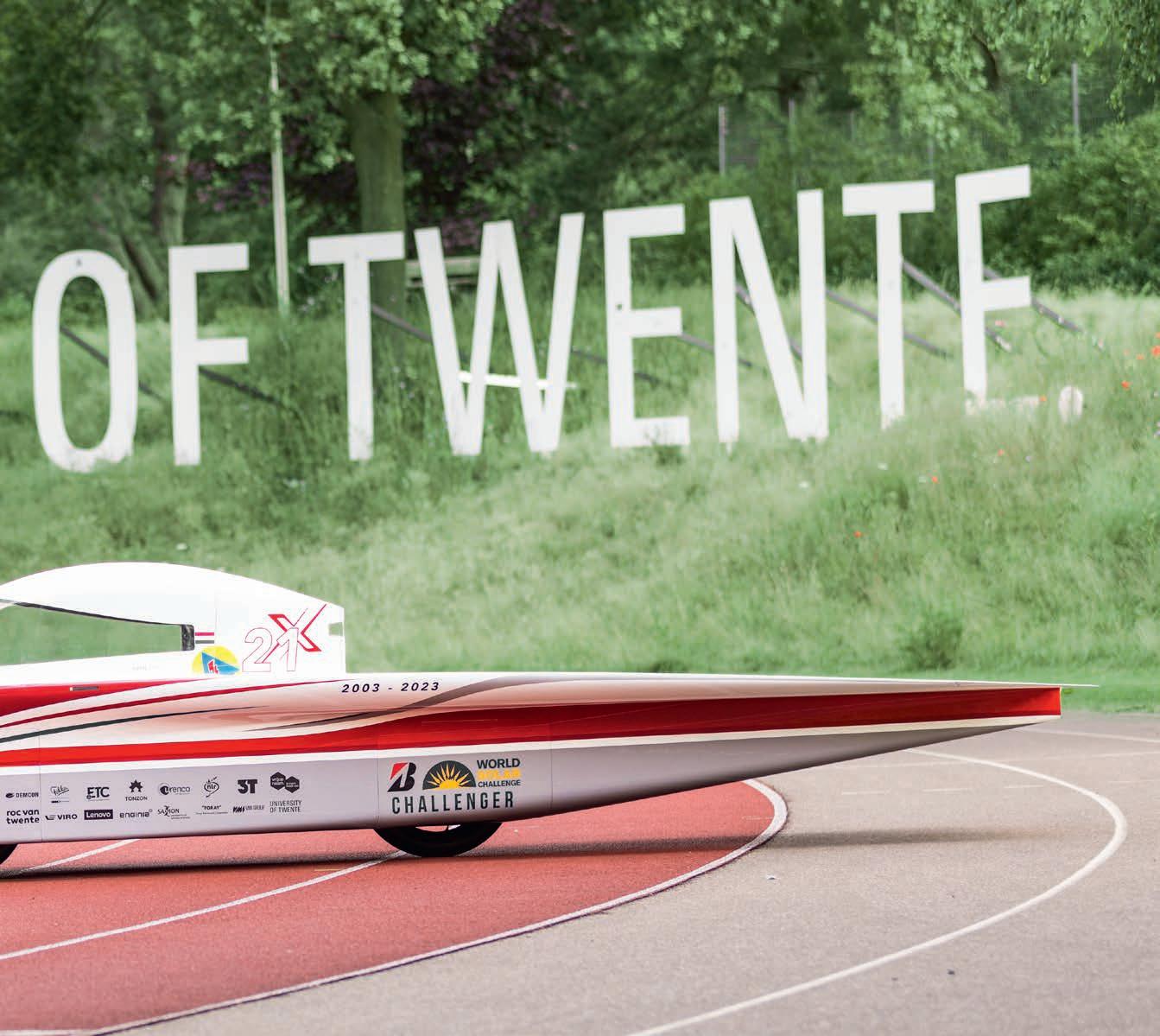
Top speed: not yet known.
First race: Bridgestone World Solar Challenge 2023.
35 04 • 2023
ALUMNUS TONY AGOTHA IS A MEMBER OF FRANS TIMMERMANS’ CABINET
‘KEEP TALKING, ESPECIALLY TO PEOPLE YOU DISAGREE WITH’

FOR A MOMENT, UT ALUMNUS TONY AGOTHA
(53) WAS BACK ON CAMPUS. THE DIPLOMAT ACCOMPANIED EURO COMMISSIONER, FRANS TIMMERMANS, DURING THE DIES NATALIS, LAST MAY. PRIOR TO THE VISIT, HE SPOKE IN HIS OFFICE IN BRUSSELS ABOUT STUDYING ON CAMPUS, HIS LOVE OF BASEBALL AND EUROPEAN POLITICS.
It is the first real spring day in Brussels. A pleasant spring sun shines over Wetstraat, also known as Rue de la Loi to the Frenchspeaking residents of the Belgian capital. An Italian journalist with a camera is recording a news segment in front of the giant logo of the Commission européenne. A little further on, dozens of Iranians are protesting with banners, signs, and flags. All of this is set against the backdrop of the Berlaymont building, which houses the European Commission.
On the twelfth floor, we find the Cabinet of Frans Timmermans. Tony Agotha, who studied public administration at the UT from 1990 to 1995, serves on his team as Senior Diplomatic Expert. In the lift, he presses the button for 13 instead of 12. ‘I’ll show you the top floor first. There we’ll find Ursula von der Leyen and her Cabinet. Not many people know this, but she also lives there during the week; though obviously, I can’t show you that area.’
TEX TOWN TIGERS
One floor down, Agotha resides in a few rooms adjacent to the offices of Timmermans and Diederik Samsom. He has been working in Brussels since 2016 and has been in his current position since 2019. In his office he has two baseballs. ‘Those are my stress balls.
INTERVIEW
36
Photos: Eric Brinkhorst Text: Stan Waning
CAMPUS
Baseball is a great passion of mine. I was born in Massachusetts, so the Boston Red Sox are my team. I used to wear that team’s baseball cap as a little kid. Still, my love for baseball was born in Enschede, playing for the Tex Town Tigers. Bertil Haage, once the best pitcher in Europe, was my coach in primary school.’
Agotha’s family roots lie in Hungary and the Netherlands, but he was born in the United States and came to Enschede when he was nine. After secondary school, he pursued a career as fighter pilot. He made it through several selection rounds, but in the final stage, his airsickness proved a deal-breaker. ‘I was very much searching for my place at that age and was primarily focused on baseball. Because of my parents’ eventful background, I had always been interested in international politics, peace and security, so my mother advised me to study public administration.’
SPARTAN ISOLATION CUBICLES
The diplomat, who lives just outside Brussels with his wife, children and dogs, looks back fondly on his UT years. ‘In my memories, it was always sunny on campus. Everything was possible and there were so many things to do alongside your studies. The music studios with tuned pianos at Vrijhof... Such luxury! I used to perform in bands a lot, together with friends from the UT and the music school. I deliberately chose not to live on campus, but close
to the city. In a room on Mina Krusemanstraat, but I was on campus a lot for both music and my studies. The Spartan isolation cubicles at the library were my salvation. Otherwise, there were too many distractions for me.’
Agotha participated in the Batavierenrace twice in his UT days. ‘And our band also performed twice at the Batavierenfeest. I’ll never forget that, especially the good atmosphere. There was never any trouble, everyone was cheerful and there was an incredible sense of solidarity between people from far and wide. If only the world were as wonderful as a Batavierenrace...’ As a student, Agotha would never have imagined that some thirty years later he would be working in the heart of European politics. ‘That’s not something you can plan. In my second year, a student told me about the so-called “diplomats’ class” at Foreign Affairs. That's when I knew I wanted to become a diplomat.’
TONY BLAIR

In his role as Senior Diplomatic Expert in a Cabinet of around thirty people, Agotha supports Timmermans on every front. ‘No, not when it comes to vision, he has that in abundance, but the Cabinet is in charge of the conception and roll-out of the European Green Deal. In addition, we give advice on all the Commission’s other dossiers and ensure that its priorities find their way into the internal
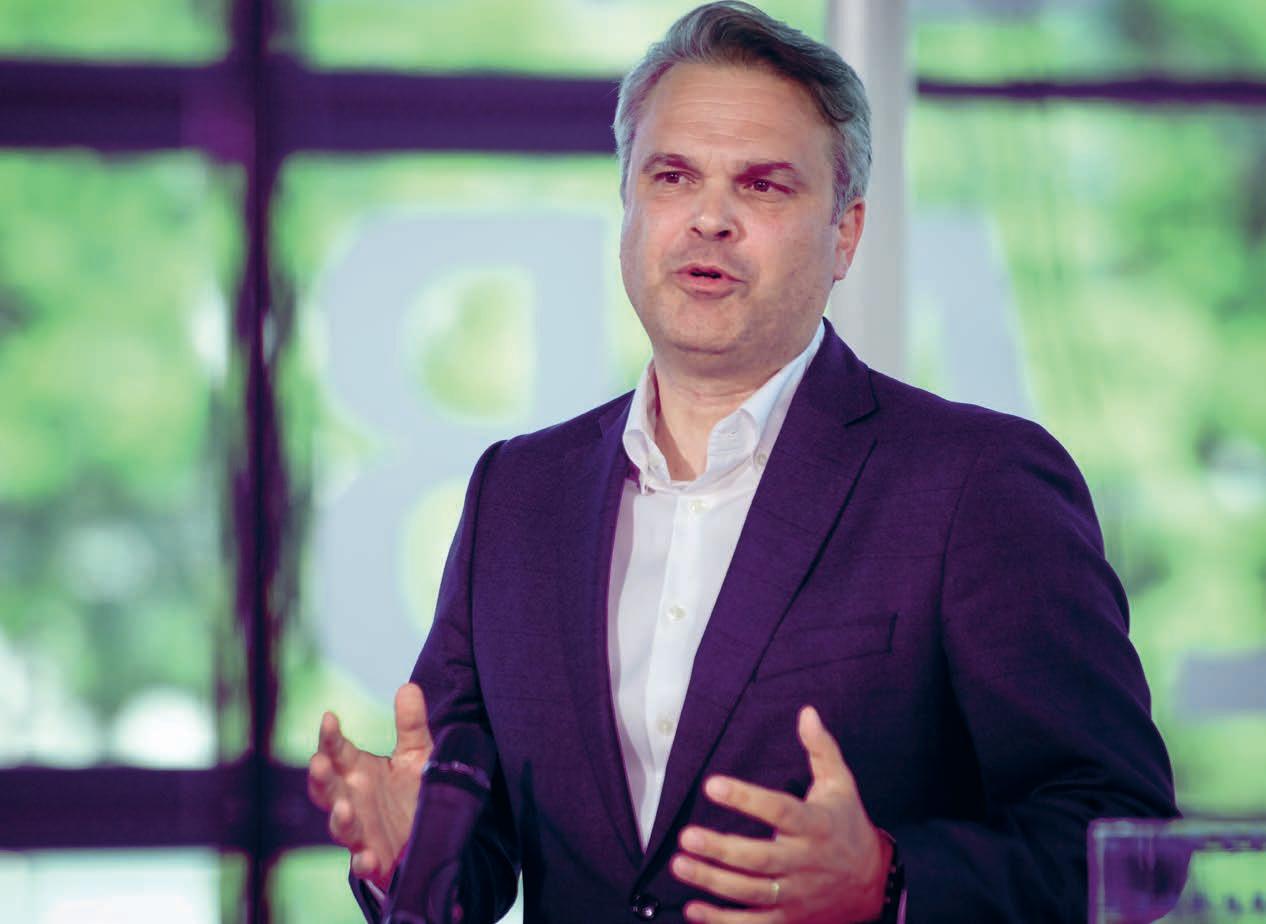
37 04 • 2023
negotiations. We keep track of everything, week after week.’ On top of that, the Cabinet is continuously focused on the outside world, on what Europeans think. ‘We receive a lot of correspondence from citizens who need a response, we prepare briefings and go on missions abroad, where Timmermans represents the EU as European climate envoy.’
Agotha points to some examples on the whiteboard with reminders behind him. ‘Every day is different. This morning, the new Turkish ambassador paid Timmermans a visit; a lot of preparation goes into that. Afterwards, I had a meeting about the rule of law in Hungary and talked to people from the Tony Blair Institute about a possible visit.’
The alumnus describes his office as an absolute privilege. ‘What we do is meaningful and has an impact. Just look at our efforts to fight global deforestation and plastic pollution, to promote the energy transition, for cleaner air, fresher water, and greener cities. Things are moving very fast. COVID-19 led to an acceleration in the transition, and on top of that came the war, which propelled the efforts even further as a geopolitical argument. Sometimes, people don’t realise how significant these changes are, but ‘business as usual’ is not an option. Ultimately, the costs of doing nothing are far too high.’

Twenty-seven Member States - all of which have a slightly different perspective on matters - have to collectively come to decisions that are supported by the Commission, Parliament and the Member States themselves. That, according to Agotha, can make
the job difficult at times. Patience is a requirement. ‘But patience sounds too passive. Tenacity, or an actively patient attitude, would be a better term. If you don’t look at Twitter, you can say that the European Union has been doing very well in recent years compared to other major powers, and we’re not even a country.’
FRIDAYS FOR FUTURE
While his gaze is firmly focused on Europe, Agotha also keeps a close eye on Dutch politics. He does not want to make any political statements about the hot topics at the UT, such as the debate on internationalisation or the clash between activists and the fossil industry. ‘But in general, I think studying in an international environment is incredibly valuable. It makes for better citizens and smarter academics. As a diplomat, I also think you always have to keep talking to each other, especially to the people you disagree with. The climate challenge is existential in nature and in order to face it we need everyone, including fossil companies. Eventually, the fossil fuel era will come to an end, and the companies in that industry are aware of that. And yes, sometimes protesters’ views are more radical than what politics can do, but as Timmermans often says: without Fridays for Future demonstrations, there wouldn’t have been a Green Deal.’
Agotha will continue to support Timmermans in his work until the European elections in June 2024. He does not yet know what the future holds for him. What he does know is that he will continue to keep an eye on the UT from Brussels. ‘If we look to the future, what we need most is innovation. And that’s exactly what the UT is rightly renowned for. My dream is for the four technical universities to work together even more closely and intensively. Isn’t that a great way to show our strength on the world stage?’
With that question, Agotha concludes his story. After all, work never stops in the Berlaymont building. With his access card, he opens the exit of the high-security building. Outside, the sun is still shining just as brightly as in Agotha’s campus memories. •
INTERVIEW
38 CAMPUS
‘My love for baseball was born in Enschede ’
THE UNDERGROUND CAMPUS
It’s a secret. A secret known to precious few. This small group of insiders has allowed me to reveal something. For this secret might explain certain phenomena; but it goes deeper than that. Deeper than what your eyes can see. Deeper than the surface.
Our campus is vast. That means you sometimes have to walk or cycle for ages to get from one building to another. Not a big deal if you have the time and the sun is shining. But extremely frustrating if you have to rush to the next lecture or meeting and it’s raining cats and dogs. So you grab your bike, dash off and arrive at your destination soaking wet. Only to discover that the person you just saw at the previous location is already there: dry hair, freshly brewed coffee in hand, laptop already open. How is that possible?
The secret: there’s an underground campus. Under the grass and roads lies a network of pathways connecting all the buildings. It was built at the time of the Cold War, which began after the Second World War ended and created great tensions between the capitalist countries with the United States as the figurehead and the communist countries led by the Soviet Union. There were threats of war, nuclear weapons and land grabs.
In the Netherlands, too, people were afraid that the Russians were coming. So it's not surprising that shelters were built all over the country to keep people safe from missiles and nuclear bombs. Our campus was also built around that time: the first buildings were erected in 1961. And beneath them, radiation-proof shelters. In order to pull the wool over the eyes of the enemy, this information was confidential. What was even more secret were the corridors connecting the shelters. As wide as a decent-sized bike path. With every new building, corridors were added, creating an intricate system.
The entrances were cleverly hidden, in innocent-looking cupboards, behind grilles. And have you ever wondered why there’s a little church in the pond in front of Vrijhof?
The fall of the Berlin Wall in 1989 officially marked the end of the Cold War. However, the underground system is still intact. The lighting works. There are old-fashioned telephones on the walls. The ventilation runs through the High Pressure Lab. There are bunk beds in the shelters.
Only a small group of insiders knows this. It’s their job to get others to safety should the need arise. Did someone graduate or find a job elsewhere? Then they look for a successor. Not necessarily someone high up the ladder, but someone they trust, someone willing to help others. So perhaps that shy student is one of the insiders. Or that library worker. Or your colleague. And yes, sometimes they use the corridors to avoid getting wet when it rains and they need to get to another building quickly.
Our world looks less peaceful now than it did at the time the Wall fell. The war between Russia and Ukraine may spread over larger territory. China may also pose a threat. I think the shelters are somewhat too cramped for the current university community, but I would guess that the entire corridor system is large enough to provide some protection.
Some people dismiss this system as a fantasy. But I’d rather think of it as a tall but inspirational tale! •
Hiska Bakker Historian, journalist and presenter at Studium Generale

COLUMN
39 04 • 2023
Photo: Rikkert Harink Text: Hiska Bakker
UT’ERS ON THE MOVE
WITH NEARLY 60,000 ALUMNI IN 173 COUNTRIES THERE IS NOT A DAY THAT GOES BY WITHOUT INTERESTING CAREER MOVES OR PROFESSIONAL SUCCESSES TO CELEBRATE! DO YOU HAVE AN ACHIEVEMENT TO SHARE WITH FELLOW UT’ERS? A JOB PROMOTION, AWARD, PUBLISHED PAPER OR PERHAPS A BOOK? THEN WE WOULD LOVE TO HEAR ABOUT IT SO SEND THE DETAILS ALONG WITH A PHOTO TO ALUMNI@UTWENTE.NL.
2006
MARLOUS REIJS
In April 2023 Marlous Reijs began as Head of Marketing and Fundraising at Alzheimer Netherlands. In this role she is board member and responsible for the full income of the organisation. Reijs studied Communications at the University of Twente between 2002 and 2006 and while a student also served as a board member of the UT Student Union. Following graduation, she started the Nestlé Young Talent Programme and for over a decade has worked in various international marketing, sales and digital roles across different divisions of the company including Nescafé, Nestlé Infant Nutrition Benelux with the last position being Marketing Manager and eBusiness Manager Food Benelux.•

1990
RON VAN KEMENADE
As of June 2023, Ron van Kemenade has become group Chief Operating Officer (COO) of the London based Lloyds Banking Group. He is thus bringing to an end nearly 20 years at ING which he joined back in 2003, and was appointed as the bank’s Chief Information Officer (CIO) in 2013, and as Chief Technology Officer (CTO) in 2021. Van Kemenade studied Public Administration at UT from 1983 to 1990, and previously to ING also worked as General Manager Internet at Postbank N.V. and Director Consumer Internet and Media Services at KPN. •
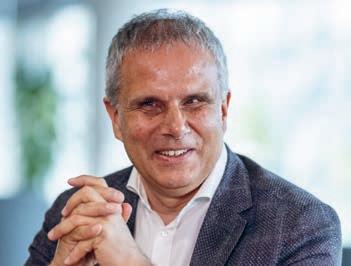
2009
JUAN JAUREGUI BECKER
After 6 years in Barcelona Juan Jauregui Becker has moved back to the Netherlands and since April is a business consultant and senior project manager at Huygens Engineers in Hengelo. Jauregui graduated from the Mechanical Engineering study at the UT in 2006 and also completed a PhD at Twente in 2010 on the topic of engineering design automation. Following 8-years as an assistant professor at the UT and Smart Industry consultant at Symbol B.V., he worked as, Digital Transformation Manager at the Mobile World Capital Barcelona and most recently as Funder in the E-Health start-up Digito Medica, acquired by Better Care in November 2022. •
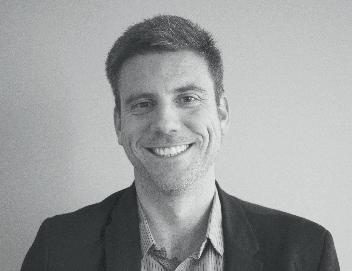
2011 2015
LIANG HIAH
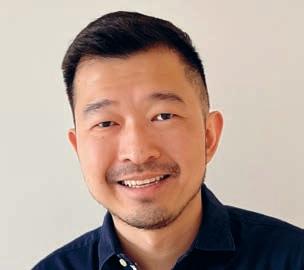
Liang Hiah has become a Principal Product Designer at Zalando in Berlin as of June 2023. Hiah finished his Bachelor’s and Master’s study in Psychology at UT in 2011 and afterwards completed a PDEng at TU Eindhoven in User-System Interaction. Prior to Zalando Hiah has worked as a user experience designer in the Netherlands at Nedap, Baker Hughes, MakerLab NL, and in Sweden at H&M and Electrolux where his last position was as Head of Product & UX. •
JAAP VREESWIJK
Jaap Vreeswijk has been working as Senior Consultant Sustainable Mobility at Arcadis since May 2023. Prior to that, he has been active in a variety of national and international research activities in different roles like specialist, project manager and facilitator in collaboration with pubic and private organizations. Vreeswijk completed a Bachelor’s and Master’s degree in Civil Engineering & Management at UT from 2001 to 2006, as well as a PhD on the topic of ‘Travel Choice Behavior’ from 2009 to 2015. •
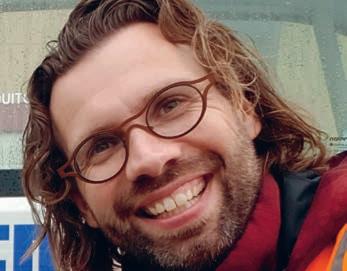
40
ALUMNI NEWS
CAMPUS
'THERE IS A SOUL IN OUR MACHINES'
ALUMNI RICHARD DROSTE OF ASML, ENTREPRENEUR/INVESTOR ANKE HUISKES AND RAOUL ZAAL OF SYNTILIO ARE THE THREE PROMINENT SPEAKERS AT THE ALUMNI TALKS 2023 ON FRIDAY 6 OCTOBER. HOW DID THEY GET TO WHERE THEY ARE TODAY AFTER COMING FROM TWENTE? WHAT IS THE PASSION THAT MAKES THEM DO WHAT THEY DO? AND WHAT DEVELOPMENTS DO THEY FORESEE, FROM THEIR RESPECTIVE DISCIPLINES, FOR THE FUTURE?
Alumni Talks
WHERE Amphitheater Vrijhof WHEN Friday 6 October 2023
TIME
15:00 - 17:00
DRINKS
Following the main programme in the Vestingbar LANGUAGE
Dutch TICKET PRICE
7,50 euro
peed is the most important characteristic of startups,' says Anke Huiskes. And she knows what she is talking about. In ten years, Anke accumulated an impressive CV in San Francisco. Huiskes moved to the US after graduating in Communication Sciences (2008) to work in marketing and sales at various enterprises. She then founded several companies. Now she is a full-time investor, mentoring startups where her focus is on encouraging diversity and sustainability.
Richard Droste, UT alumnus and researcher at ASML, is also a speaker at the Alumni Talks. He believes that 'there is a soul in our machines, without intuition and experience they wouldn't work.' At ASML, he co-invented the world's most advanced chip machines. This puts ASML at the forefront of future technological innovations, be it space technology or the mobile phone of the future. Droste studied Applied Physics and Quantum Electronics (1987). He is Vice President Development & Engineering at ASML.
'Technology does not have the leading role,' says Raoul Zaal, CEO of Syntilio, a company that uses technology to bring healthcare closer to patients. For him, it's all about helping people so they can stay independent for longer. Zaal works to bridge the gap between 'cold technology' and 'warm care'. He did the same as CEO at FocusCura, market leader in healthcare innovation and deployment of (home) care technologies. His career started as a Board Member of DSCC/ DJCR 'Audentis et Virtutis'. Raoul studied Industrial Engineering & Management (1994).
Come hear their stories and join them in conversation! •
BUY YOUR TICKETS ONLINE
https://www.utwente.nl/en/alumni/ alumni-events/alumni-talks-2023/
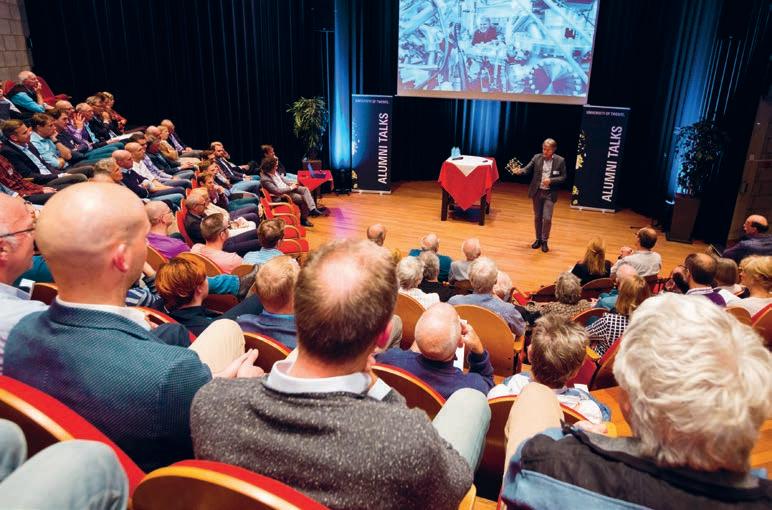
ALUMNI NEWS
Twitter: @alumniUTwente Facebook: Alumni Universiteit Twente Instagram: @alumniutwente SOCIAL MEDIA
‘ S
Text & photo: Alumni Office
41 04 • 2023
TEAM UP FOR TALENT!
SUPPORT OUR ANNUAL CAMPAIGN 2023
MORE THAN 300 DONORS HAVE ALREADY PRECEDED YOU YOUR DONATION COUNTS EVERY SINGLE YEAR
SUPPORT OUR HEALTH RESEARCH
Professor Jai Prakash, Engineered Therapeutics

SUPPORT SUSTAINABLE TRANSPORT

Kirsten Bouwman, student Industrial Design, team manager Solar Team Twente
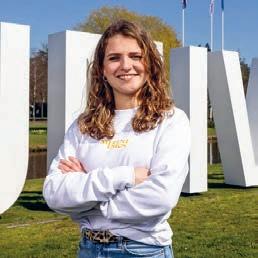
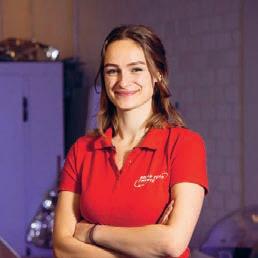
INCLUDE THE UNIVERSITY IN YOUR WILL
Even when you are no longer around, you could benefit future generations at the University of Twente. By leaving a gift to the University Fund in your will, you will enable new generations of students to flourish and our research to provide a valuable contribution to society. Considering leaving money to the University Fund in your will? We would be happy to discuss the possibilities with you. •
For more information: www.utwente.nl/ en/universityfoundation/donate-folder/ leaveagiftinyourwill/
DONATING WITH TAX BENEFITS




Do you donate to the University Fund annually or are you thinking of doing so? You can easily enjoy a tax benefit by making your donation a periodical gift. Doing so will allow you to raise your contribution without spending any extra money. •
For more information: www.utwente.nl/en/ universityfoundation/donate-folder/ periodic-donations/ CAMPUS

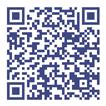
SUPPORT EQUAL OPPORTUNITIES
Omar Bahig, student Technical Medicine from Yemen

POWERED
SUPPORT A GREEN CAMPUS
Quinty van der Helm, student Technical Medicine, Board member Student Union
BY UNIVERSITY FUND TWENTE
‘From the ‘Batavierenrace to Theatresports, from intimate readings and huge parties to conferences and symposiums.’ Two examples of events in the past few months that have been supported by the fund. •

In April, Nesko's 59th tour took place in which a number of UT students participated. The programme included a violin concerto by Dvořák and Beethoven's seventh symphony. The tour took Nesko all over the country. Most impressive was the concert in the penitentiary of Middelburg. The orchestra also played in the Concertgebouw for NPO Klassiek. Closing concert was in the NedPhO dome in Amsterdam. •
In March, seven UT students organised the second edition of the Sky is the Limit' festival at Airport Twenthe: 'The one and only student festival of Twente'. More than 800 visitors came, more than 100 more than hoped. The festival is especially for MBO, HBO and WO students in and around Enschede. ‘We want to create an awesome party at an affordable price,’ the organization said. •

TWENTE UNIVERSITY FUND
42
MEREL BOERS (NICOLAB) WINS VAN DEN KROONENBERG AWARD 2023
Merel Boers, co-founder and CEO of Nicolab, won this year's Van den Kroonenberg Prize for excellent entrepreneurship. Boers graduated in Technical Medicine at the University of Twente in 2014. Four years later she obtained her doctorate cum laude with Professor Slump. The PhD research focused on analysis of CT scans in stroke and was part of a global study (known as the MR CLEAN study) into improving stroke care.
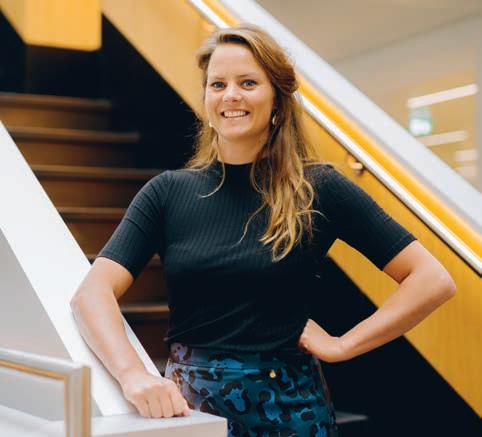
Boers and co-researcher Renan Sales Barros recognized the need for an AI solution to revolutionize stroke care and founded Nicolab back in 2015. Based on the MR CLEAN study, they developed 'StrokeViewer'. StrokeViewer not only contains accurate AI algorithms to diagnose stroke patients worldwide, but also drives the decision-making process for prompt treatment. The CT scans are sent from the scanner directly to the 'secure cloud' where a diagnosis is made in a few minutes using AI. This is immediately shared digitally with a team of healthcare professionals for verification. The treatment team is then informed of the hospital where the treatment will take place. This team can prepare and carry out the treatment based on the information received. This enables a fast and effective approach.
Nicolab, based in Amsterdam, has grown strongly over the past two years and now has about sixty employees. Hospitals pay for a license and have a return on investment because patients spend less time in hospital. At the moment, three-quarters of the hospitals
in the Netherlands have a license and there are about 200 hospitals worldwide connected. A pilot is now also underway in Belgium to use the technology behind StrokeViewer for the workflow of other time-critical diseases such as heart and lung diseases. Boers has convincingly demonstrated how modern technological solutions can contribute to better and affordable healthcare and health. With Nicolab, Boers subsequently built up a company that was quickly taken up by a large part of the market on the basis of an attractive proposition for hospitals. That makes her the winner of the Van den Kroonenberg Prize 2023.
The Van den Kroonenberg Prize is a tribute to former rector magnificus Harry van den Kroonenberg. He was at the cradle of 'the entrepreneurial university'. The prize is intended for excellent, and proven successful, young entrepreneurship. •
DONATION OF 500,000 EUROS FOR RESEARCH INTO BRAIN DAMAGE
Through a mutual connection they were once invited by the University Fund to attend a number of presentations by researchers. The research into recovery chances for people with brain damage attracted their interest. They have been supporting the researchers for many years and come by every year to hear how the research is progressing.
This year, a foundation affiliated with them made a new, considerably higher, donation. The couple and the foundation would like to remain anonymous, but would like to say that they find it very interesting to closely follow the scientists in their pioneering work. This year they made a new, considerably higher, donation. The couple would like to indicate how interesting it is to be able to follow the scientists closely in their groundbreaking work, but would like to remain anonymous.
Every year, approximately five thousand patients in the Netherlands end up in a coma as a result of brain damage after a cardiac arrest. Half of these patients die. In the other half, the chance of permanent memory disorders is about fifty percent. These patients can no longer fully work and suffer from anxiety and depression. Neurologists professor Michel van Putten and professor Jeannette Hofmeijer are conducting research to develop treatments that improve the damaged memory function of these people. With this donation they can speed up research in the hope that an effective treatment will come into view sooner. •
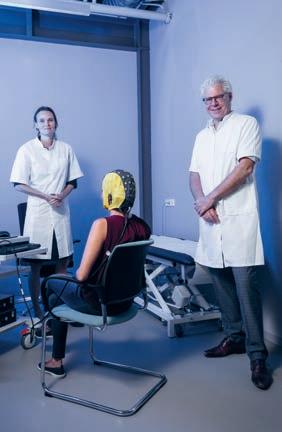
The Twente University Fund has officially been classified as a charity by the Tax Administration. The Foundation has been given the status of ANBI (Public Benefit Organisation, PBO). This means that donations to the fund are tax deductible under certain conditions. Visit our website at www.utwente.nl/ufonds for more information.
Contact: Maurice Essers, director: 053 489 3993 or m.l.g.essers@utwente.nl


43 04 • 2023
EVERYTHING COMES TOGETHER IN UT’S WATERLAB
THE NEW WATERLAB AT THE UNIVERSITY OF TWENTE - LOCATED BY THE POND NEXT TO VRIJHOF - IS A SPECIAL TEST CENTRE FOR CONDUCTING RESEARCH IN THE FIELD OF WATER AND MEMBRANE TECHNOLOGY. IT IS WHERE THE MEMBRANE SCIENCE & TECHNOLOGY DEPARTMENT IS RESEARCHING HOW TO DEVELOP A CIRCULAR WATER ECONOMY.
This spring, an eye-catching structure was erected by the pond at Hogekampplein. It is a small building made entirely of glass, which closely resembles a glass display case. If you peek inside through the windows, you see all sorts of mysterious devices, tubes, taps and buttons. The fact that thousands of litres of water are flowing through the tangle of pipes is not immediately noticeable, but it is clear that something is happening here.
A few signs with explanations and flow charts provide some more information. This is the recently opened Waterlab of the The Membrane Science & Technology cluster at the Faculty of Science and Technology (TNW). ‘Our regular labs are rather hidden, but this lab is in the perfect place to showcase our research to the outside world,’ explains Heleen Sombekke. As project leader, she talks proudly about the Waterlab. ‘In a normal lab, you take pure water and add salts yourself. But seawater contains more than just some salts. In this lab, we have access to four different types of water: wastewater, rainwater, pond water and drinking water.’ A smile appears on her face. ‘Here, we research real water.’
DRINKING WATER SHORTAGE
And there is a clear need for good research on clean drinking water. The pressure on our drinking water supplies is growing. Climate change
leads to more and more extreme droughts which are increasingly causing problems. ‘Approximately one billion people are already suffering from drinking water shortages, and this number is likely to increase. It’s a dire situation,’ says Walter van der Meer, UT professor of Membrane Technology. Van der Meer conducts research at the UT one day a week and spends the rest of the week working as CEO of drinking water company Oasen NV.
‘Climate change is causing salinisation; fresh groundwater is becoming increasingly salty due to rising seawater. More and more groundwater sources located further inland are under threat,’ Van der Meer continues. He has no qualms about pointing out all the dangers. Population growth, population ageing, medicine residues and industrial waste discharges from higher up the river, all of these problems are brought up.
SOCIAL INTERESTS
That is why the Membrane Science & Technology cluster has been researching membranes for fifty years. It all started in the 1960s with a shoe. Kees Smolders was researching porous polymer layers needed to make 'Enka chamois' and artificial leather for shoes at the Algemene Kunstzijde Unie (now AkzoNobel). Both products had to be porous.
RESEARCH Photos: Rikkert Harink Text: Kees Wesselink - Schram
44 CAMPUS

45 04 • 2023
‘ I wish every department could have its own Waterlab ’
Enka chamois was supposed to absorb water while artificial leather actually had to let it pass through to keep your feet dry.
Smolders took his work to the UT, which was still known as the Technische Hogeschool Twente (Twente Technical College, THT) at the time. When he started working there in 1969 - first as dean of the Faculty of Chemical Engineering and from 1973 as a professor - he was one of the first people in the Netherlands to focus on membranes. He only had money for two PhD candidates, so he felt it was necessary to seek funding from the corporate sector. To that end, it was important that research at universities should become more concerned with social interests and industrial innovation.
‘That focus on application has been further expanded at our cluster since the turn of the millennium,’ Sombekke says. ‘We now incorporate virtually all aspects of membrane technology in our research. Inspired by at that time the new professor Matthias Wessling, we no longer limited ourselves to researching new materials for membranes, but we also started studying the process and, for example, the best shape. The last step was always to find a good practical application. With every invention, we ask ourselves: What exactly can we use it for?,’ adds Van der Meer.
PHYSICAL FILTERS
At the membrane cluster, they have the ‘complete membrane package’ as Sombekke likes to call it. This consists of the membranes themselves: a bundle of straws at the nanoscale where only water can pass through. Salts, contaminants, and all other substances are too big. By cleverly selecting the right materials or placing the membranes on top of each other in a certain manner, you can essentially filter any substance you want. If you charge the material, it makes it either harder or easier for certain charged particles to pass through.
The main advantage of this is that it’s a purely physical process. ‘If you want to clean water biologically with bacteria, for example, you have to keep all kinds of properties of the water - like temperature and acidityas constant as possible. And if you want to purify it chemically, that often results in unwanted and sometimes even harmful by-products,’ Van der Meer explains. When it comes to membrane filtration, you just need quite a bit of pressure to force the water through the membrane.
But a new membrane alone is not enough. The cluster also explores how to make it fit into the process. From production to application. They
are constantly searching for ways to fit the new membranes into the old production methods and to make those old production methods more efficient. ‘We develop membranes made in water. Without harmful solvents, the membranes are made to be highly sustainable. But a production company will only make use of them if they fit into the old production methods,’ says Van der Meer.
Membranes have been used in water purification for a long time, but only as one of the intermediate steps. According to Van der Meer, however, membranes could potentially replace six to seven steps in the process. ‘You can use a membrane to turn salt water into fresh water and filter out all the harmful substances at the same time. Water molecules are so incredibly small that we’re already removing harmful substances that we may only discover ten years from now. Because those new compounds have to be bigger than water.’
WATERLAB
The new Waterlab is where it all comes together. The lab has a total of five pilot spots to test out new membranes and processes on a smaller scale. ‘In a normal lab we filter about one litre per hour, but in the Waterlab, a pilot installation can filter about a thousand litres per hour,’ explains Sombekke, ‘and that’s nothing compared to a largescale pilot in actual practice where an installation sometimes filters a thousand cubic metres per hour, but for that to happen, you have to be quite certain that your idea works.’
‘The ultimate goal is to develop a fully circular water economy. Water is so cheap in the Netherlands that we use drinking water when it’s not really necessary. If we take a critical look at what kind of wastewater we can still reuse, we don’t always have to use groundwater as a supply source. Sometimes a company has a huge amount of used water on hand, which would be perfectly suitable for the company next door to use as process water, for example. But since we don’t know this about each other, we don’t make that connection,’ says Sombekke.
Both Sombekke and Van der Meer hope that the Waterlab will inspire as many people as possible. Sombekke: ‘Too much research still happens behind closed doors. It’s such a shame! We have a beautiful campus which is an excellent place to showcase innovations.’ ‘If you walk around on campus, you should be able to see all the things people are working on here,’ Van der Meer adds. ‘Every visitor can be the next link to industry and new applications. I wish every department could have its own Waterlab.’ •
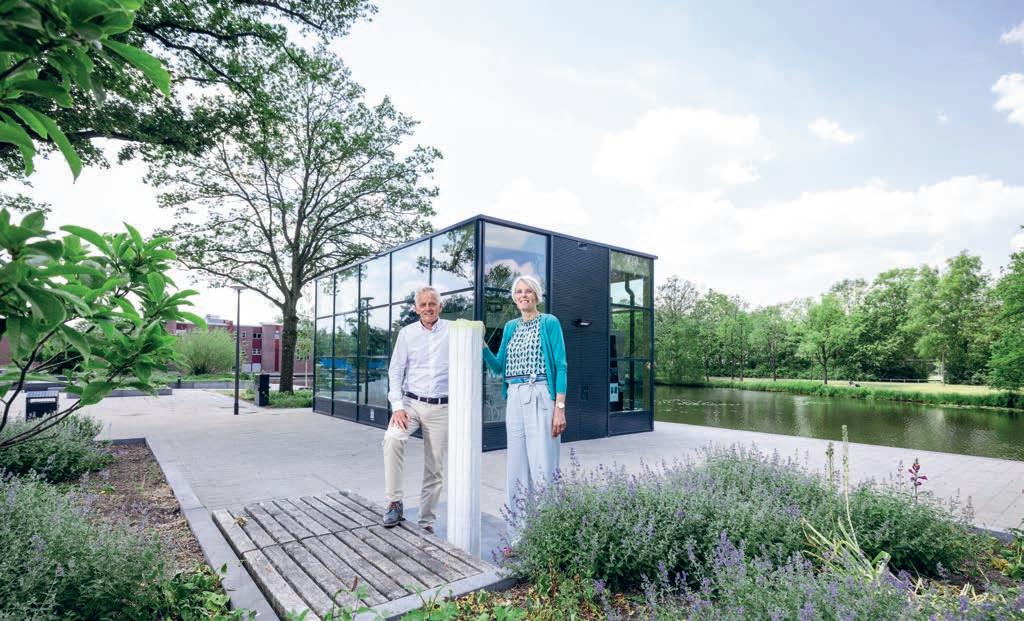
RESEARCH 46 CAMPUS
TACKLING GLOBAL PROBLEMS AT LOCAL, NATIONAL AND INTERNATIONAL LEVEL
The challenges society faces today are complex and far-reaching. More than ever, they call for the collaboration of many different, complementary stakeholders. At ECIU University, of which University of Twente is a partner, our vision is to help solve these complex challenges and make society futureproof by collaborating at local, national and international levels.
In order to realise this, ECIU University and University of Twente adopt a new approach to research, learning and innovation. We bring together students and scientists with government, businesses and citizens to identify urgent, definable problems across all societal domains, from transport and mobility to the energy transition or a smart circular economy. We then form international, multidisciplinary teams
and help to solve complex societal problems through a challenge-based approach. Do you work for a public or private organisation and would you like to make an active contribution to this new learning programme? Then we are looking for you! Marike Boertien (Novel-T, University of Twente): ‘We see challenges as an opportunity to build long-term relations within our ecosystem. Students, researchers and stakeholders working together to solve a challenge is a powerful mix of creativity and innovation and we hope you want to join us.’
WHO WE ARE
The European Consortium of Innovative Universities (ECIU)
12 universities, one open community
12 inspiring campuses in multiple European cities
12 connected regional ecosystems of universities, businesses and civic society
12 partners offering countless combinations of education, research & innovation opportunities
12 challengers of conventional thinking
One transformational approach to on- and offline education, research and innovation
We would definitely like to get in touch with you as a challenge provider
“
VISIT UTWENTE.NL/ECIU
